Have you ever wondered about Dubai’s fascinating history? Today, it stands tall as one of the major architectural marvels in the world. But believe it or not, this bustling city was once just a small palm grove amidst the desert. Over time, it blossomed into a sprawling metropolis, evolving into one of the world’s most advanced and futuristic capitals.
From the sandy dunes of the Emirate emerged a city brimming with exotic infrastructure, holding onto its authentic Bedouin traditions while embracing modernity.
If you’re curious about one of the most transformative destinations on the globe, we suggest reading into the rich architectural history of Dubai, where tradition meets innovation. Let’s take a journey back in time and answer the question of, when was Dubai built?
Emergence of Dubai’s Architecture
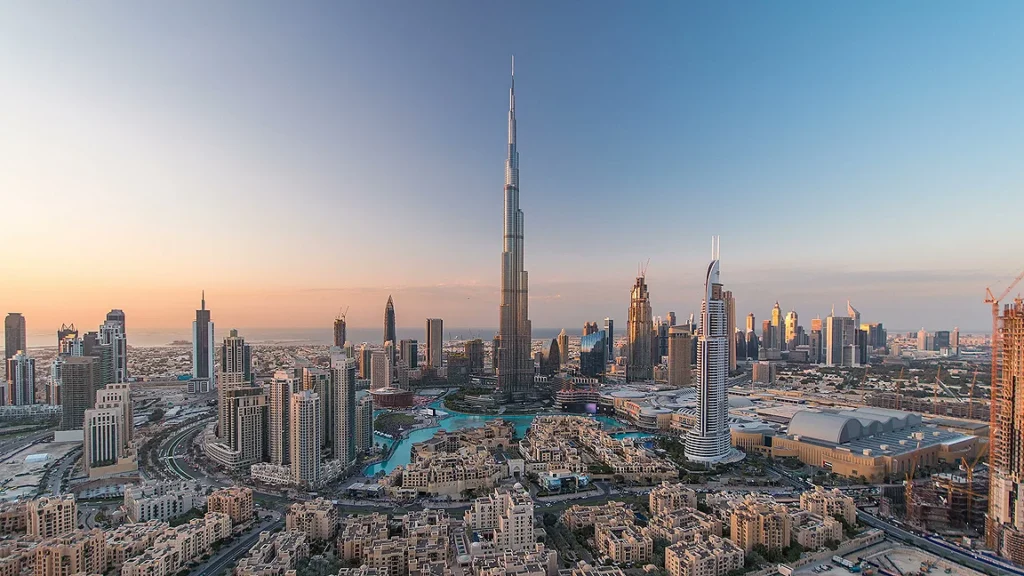
Let’s take a brief look at the transformation of the infrastructural and architectural landscape of Dubai over the years.
Dubai, The Palm Grove
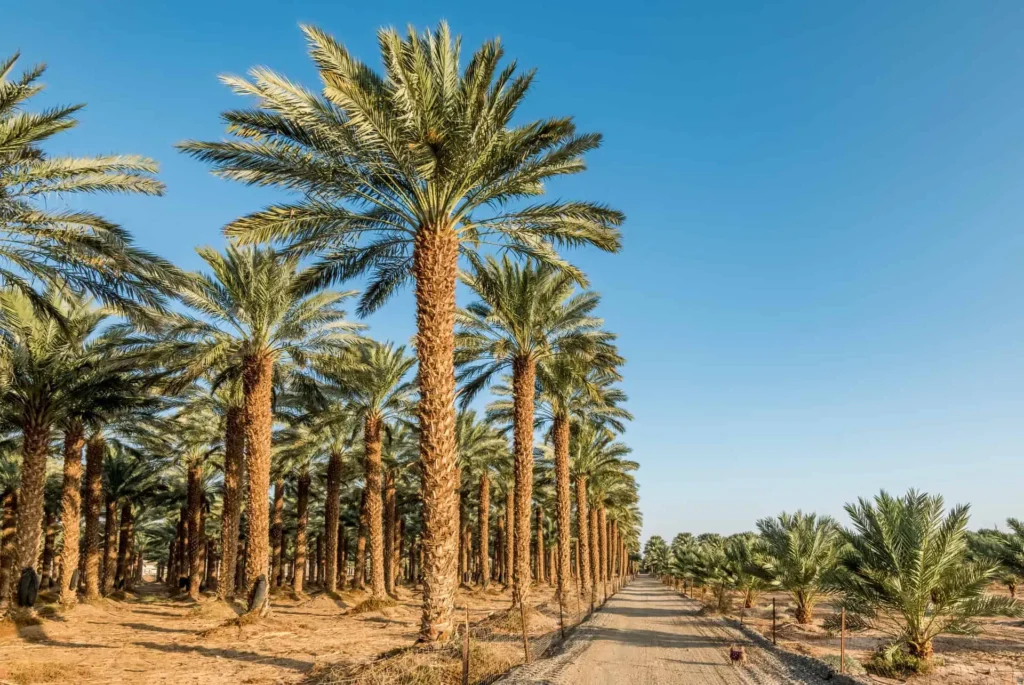
When the Minoans lived there, from 3,000 BC to the 5th century, the area that is now Dubai was unfit for human habitation. It was just an enormous, desiccated mangrove.
But when shepherds from the nomadic community established in what is now Al-Qusais, northeast of the city, about 2,500 BC, things began to change. Dubai truly began to flourish in the 7th century as a thriving fishing hamlet.
While daily life in Dubai centred on the same pursuits from the 12th to the 18th centuries, it also developed into a major trading centre for gold, textiles, and spices. The Portuguese set up shop there from 1448 to 1657, but they were eventually ousted by the English and Dutch by the mid-17th century. This is where it all began….
Dubai, The Modern City
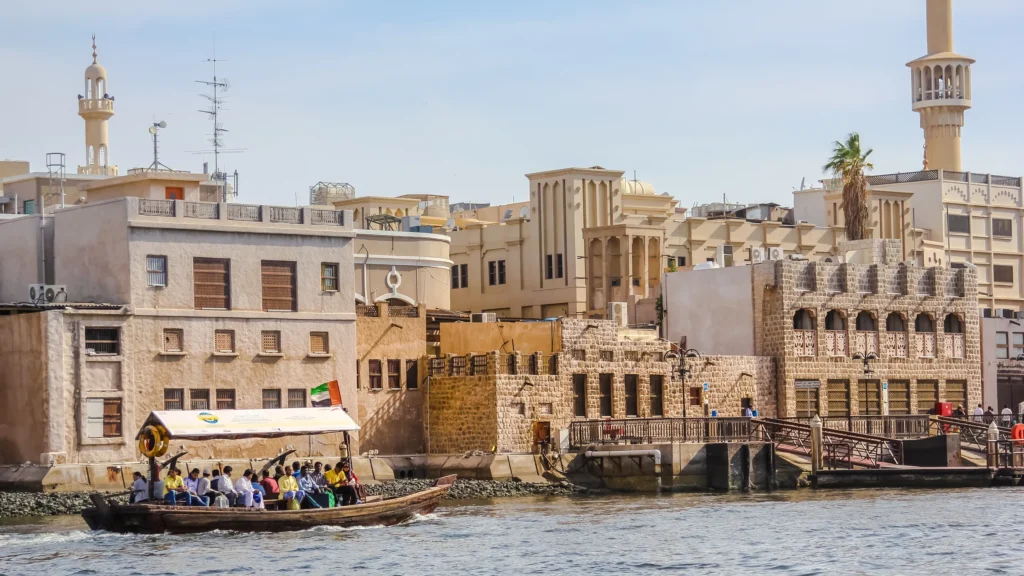
The mid-19th century saw the beginning of Dubai’s history as we know it today. Although many settlers had migrated away from the “Dubai Creek” to places like Bur Dubai and Deira by then, the city started to acquire popularity once again in the early 1950s, when it had a population of around 15,000 people.
With its bustling souks (markets), schools, mosques, and colleges, Dubai attracted traders from all corners of the globe, enjoying a period of prosperity that prompted the Sheikh to consider a makeover. He hired British architect John Harris to redesign the city, which he did beginning in 1959. Additionally, Dubai’s population kept growing as a result of an influx of international workers.
Numerous initiatives followed suit, such as the installation of running water, telephone lines, and electricity. The city got its first paved road in 1961 and its first airport the following year. The next major move? Developing the port!
Two major turning points in the history of Dubai were the opening of the city’s hospital and the Maktoum Bridge, which connected Bur Dubai with Deira in 1962.
The Birth of the United Arab Emirates
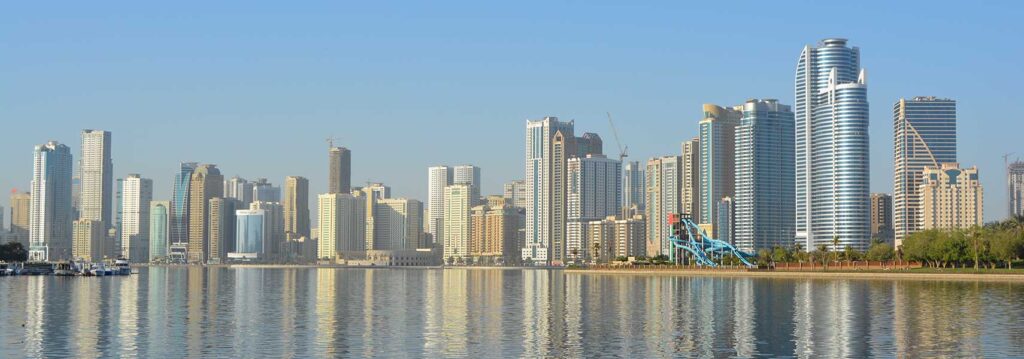
Abu Dhabi, Ajman, Sharjah, Umm Al Quwain, and Fujairah were the first governorates that formed the UAE on December 2, 1971. A year down the road, Ras Al Khaiman became a member of the consortium. As a symbol of its newly-found autonomy, Dubai chose the dirham as its common currency, and it is still in use today.
New oil and gas deposits found in the Margham desert prompted development, which in turn led to the building of important infrastructure, including the Rashid Port, the Shindagha Tunnel, the Jebel Ali Port, and the Garhoud Bridge. The opening of Dubai International Airport in 1972 is particularly noteworthy.
Due to the influx of visitors from across the world, Dubai has to expand to meet the demands of its expanding population. In 1979, massive shopping malls and a remarkable structure were introduced: the Dubai World Trade Center, which stood as the city’s tallest skyscraper!
Emirates Airlines, now one of the world’s top ten airlines, set up a base in Dubai in 1985, while the Jebel Ali Free Zone was established as a designated free trade area.
1990-2000: The Golden Age of Dubai
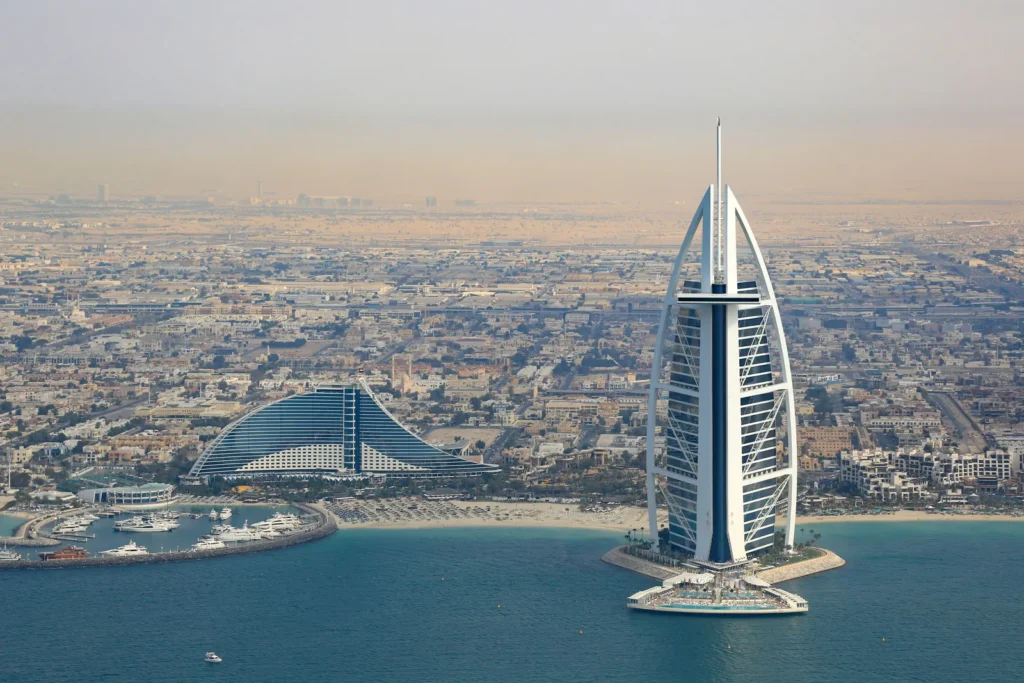
By 1990, Dubai had grown to be a remarkably urbanized city with 550,000 residents. Sheikh Maktoum bin Rashid Al Maktoum, his son, assumed leadership after Sheikh Rashid’s death in the same year. The newly appointed head has even higher goals in mind, especially with regard to architecture.
With a vision to make Dubai a cutting-edge city, Sheikh Maktoum started a number of ambitious projects. He had visions of modern complexes that were luxurious as well as practical.
In 1999, he commissioned the construction of the towering Burj Al Arab hotel, famously known as a 7-star establishment—the only one of its kind in the world. Throughout the 2000s, Dubai witnessed the rise of iconic structures that shattered records and solidified its status as a premier architectural destination: The Marina in 2000, the sprawling Burj Khalifa in 2008 (standing at an impressive 2716 feet or 828 meters), Palm Jumeirah, an artificial island shaped like a palm tree completed in 2009, and the ongoing ambitious project of the World Islands, among others.
The Dubai Metro, which debuted in 2009, and the Dubai Frame, which stands at a height of 492 feet (150 meters) and provides panoramic views of both old and modern Dubai, are two notable additions to the city’s skyline.
Looking ahead, the Dubai Creek Tower is set to emerge as the country’s new tallest tower, surpassing even the Burj Khalifa. During this transformative period, Dubai’s airport became the largest in the world. New neighborhoods sprouted, including the colossal Dubai Mall—the largest shopping mall globally—and numerous skyscrapers.
The History of Dubai: 2020 and Beyond!
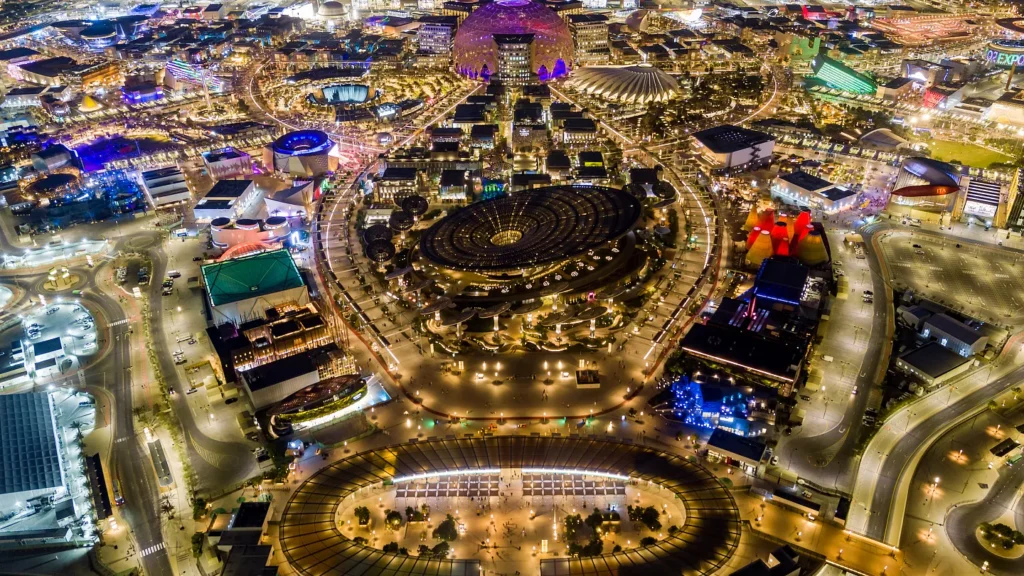
There are even bigger projects in the works, such as the construction of the Mall of the World, a city-sized retail center, and a futuristic metropolis modeled after Aladdin.
Not to mention, Dubai has developed into a sanctuary that has enticed everyone in the world. It’s a modern wonderland with uncountable architectural marvels. Dubai has essentially evolved into a place where dreams come true!
Dubai Architectural Chronicles in the Early Years (70s-90s)
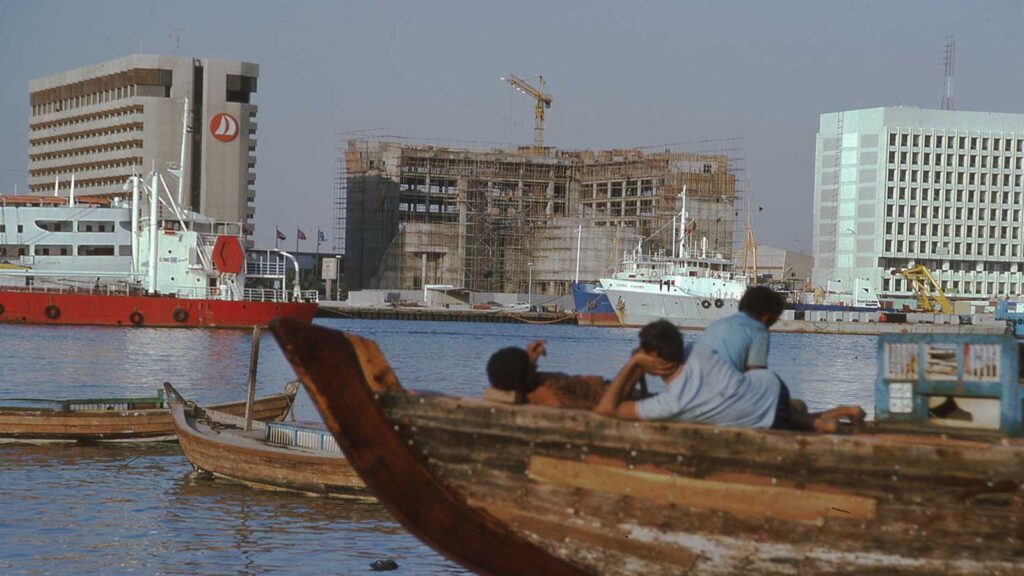
Let’s take a look back at these architectural gems when Dubai was still figuring out its position in the world.
Deira Clocktower (1963-Completion, 90s-Renovation)
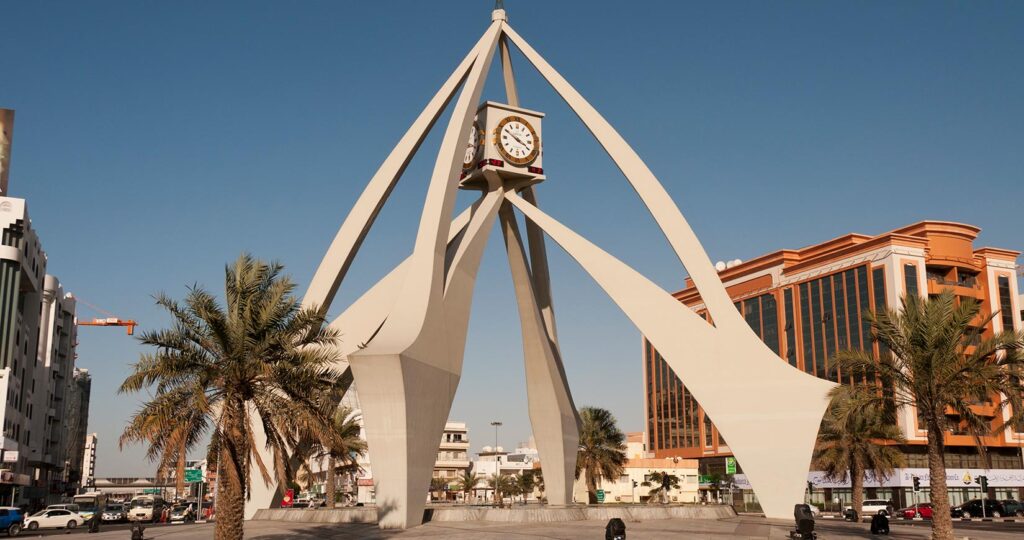
Constructed in the 1960s, the Deira Clocktower underwent renovations in the 1990s, making it a recognizable landmark in the Deira region.
Al Shindagha Tunnel (started in 1975)
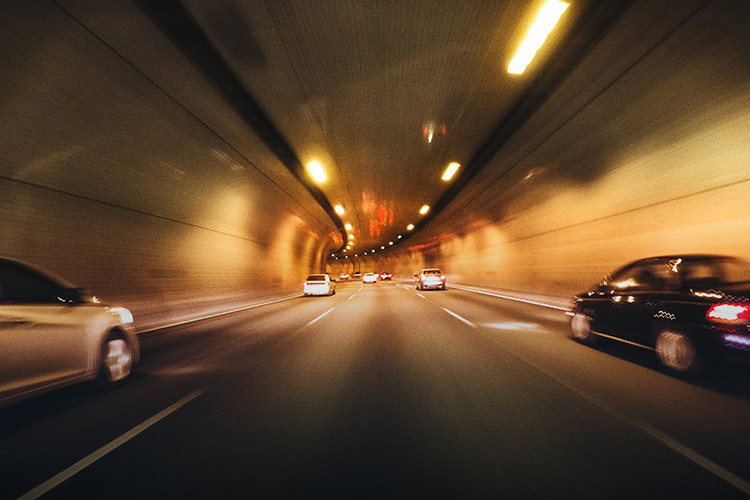
An important infrastructural project, the Al Shindagha Tunnel improved connectivity between Deira and Bur Dubai, facilitating the growth of urban areas on both banks of the Dubai Creek.
Jebel Ali Village (completion in 1976)
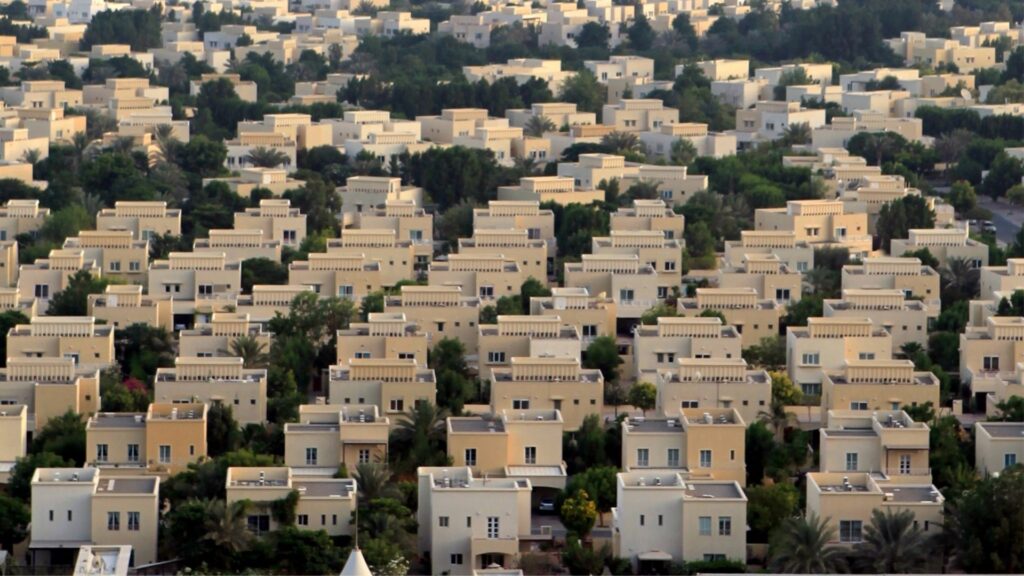
One of Dubai’s oldest residential areas, Jebel Ali Village, is renowned for its close-knit sense of community. Established in 1976, this residential area faced closure by Nakheel in 2008 to make room for a new development, with demolition looming ahead.
Al Ghurair Centre & Al Mulla Plaza (1978 & 1979 respectively)
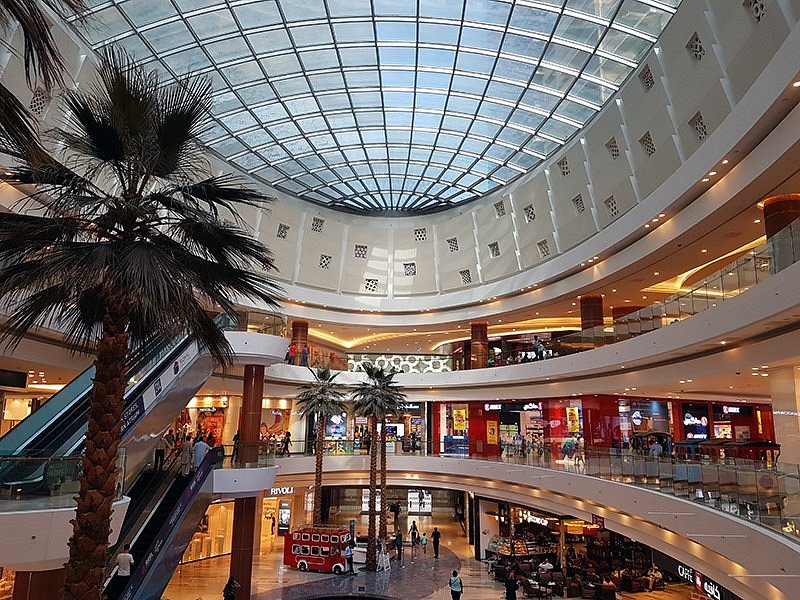
Being one of the earliest shopping centers in the area, Al Ghurair Centre was crucial in influencing Dubai’s transition to contemporary retail establishments. Comparably, Al Mulla Plaza was a pioneering shopping center that contributed to the development of contemporary retail establishments in the city.
Hyatt Regency Dubai (started in 1979)
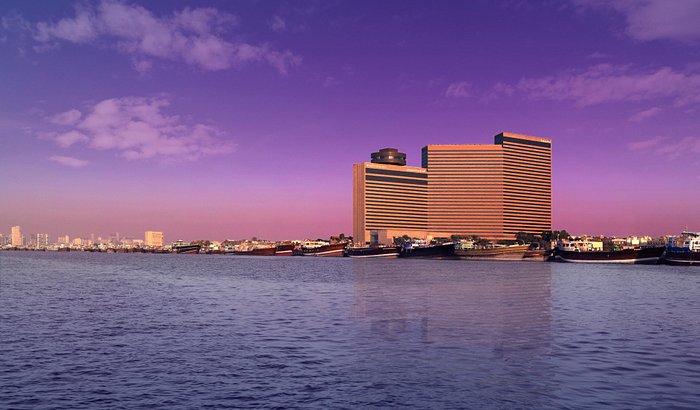
Dubai’s first five-star hotel, The Hyatt Regency, had a significant influence on the development of the hospitality and tourist sectors in the city. The focal points of this iconic structure were the rotating restaurant at the top and the indoor ice rink.
Dubai World Trade Centre (started in 1979)
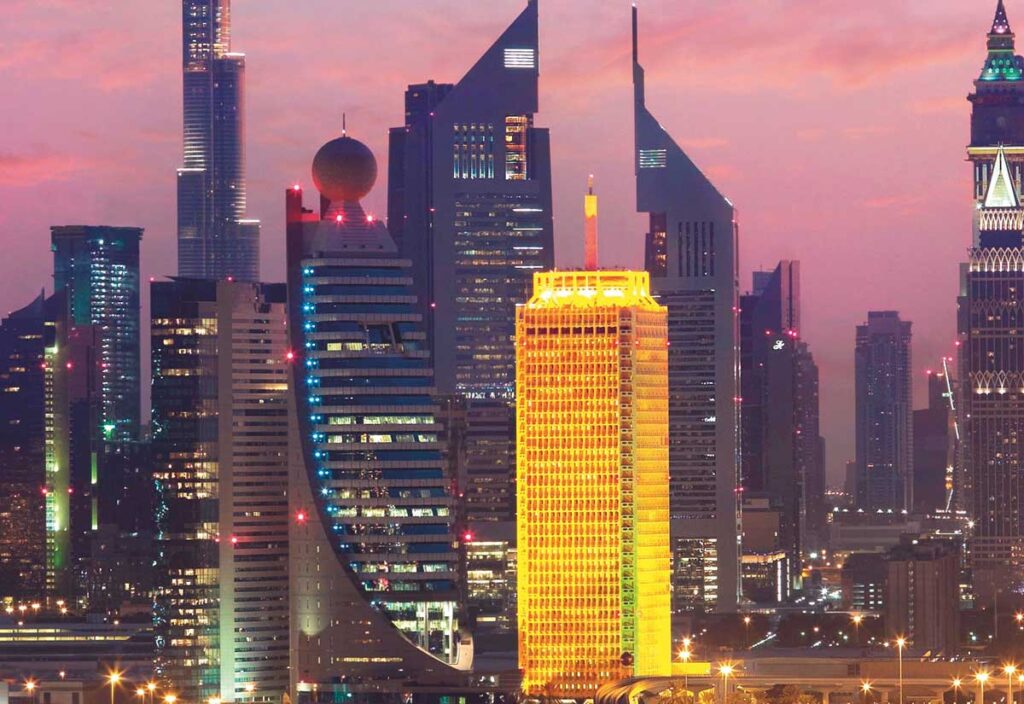
This was one of the first high-rise buildings in Dubai, built by John Harris, signifying the city’s increasing prominence as a corporate hub.
Chicago Beach Hotel (opened in 1979 and razed in 1997)
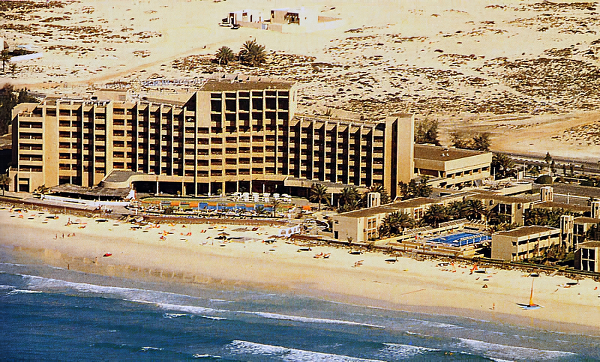
Chicago Beach used to be a large, open stretch of sand that ran along Dubai’s shoreline towards Abu Dhabi. The beach was very remote back then. The hotel was eventually demolished to provide space for the Wild Wadi Waterpark, which is now located not far from the Burj Al Arab.
Jumeirah Mosque (built in 1979, expansion in the 80s)
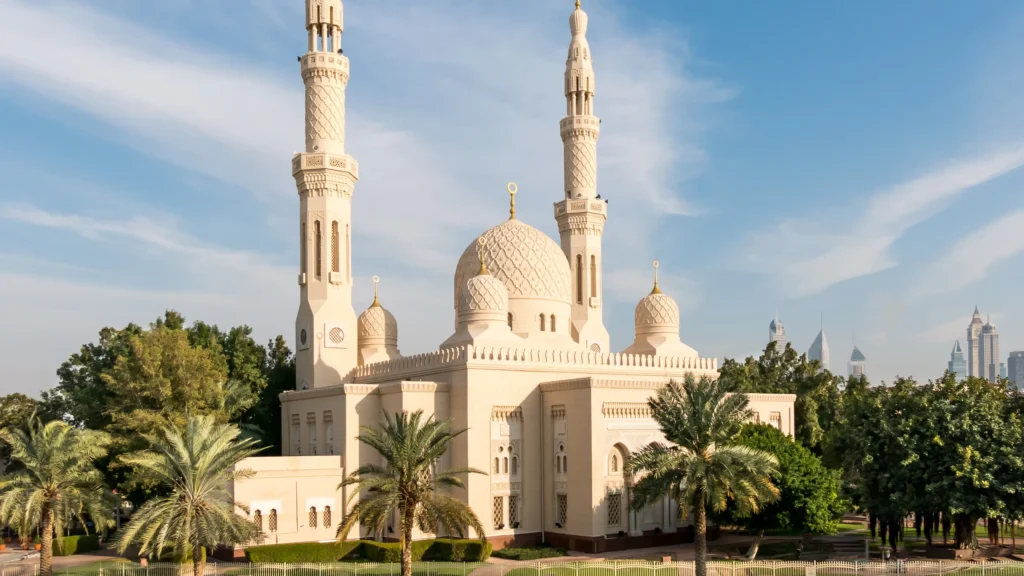
The mosque was built in the late 1970s, but in the 1980s it underwent major improvements and extension. It acts as a notable example of Islamic architecture in the city.
Dubai Municipality HQ (built-in 1970s)
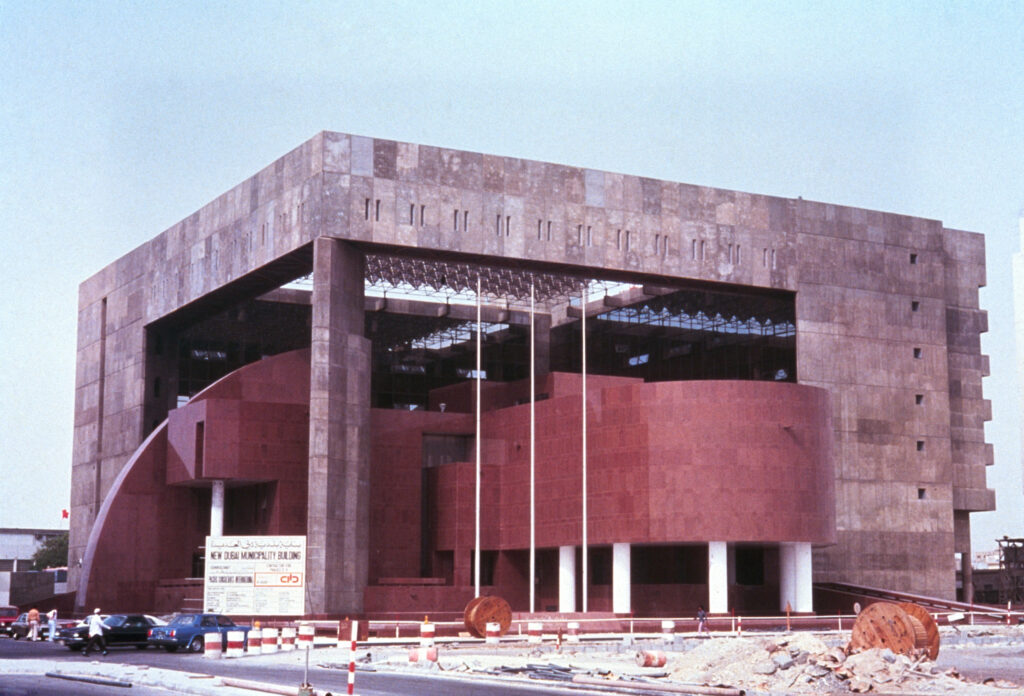
Its architectural style blends practical considerations with the ideas of modernist design. Typical of administrative buildings of that era, the building’s design is basic and utilitarian.
Chinese Pagoda House (finished in 1981)
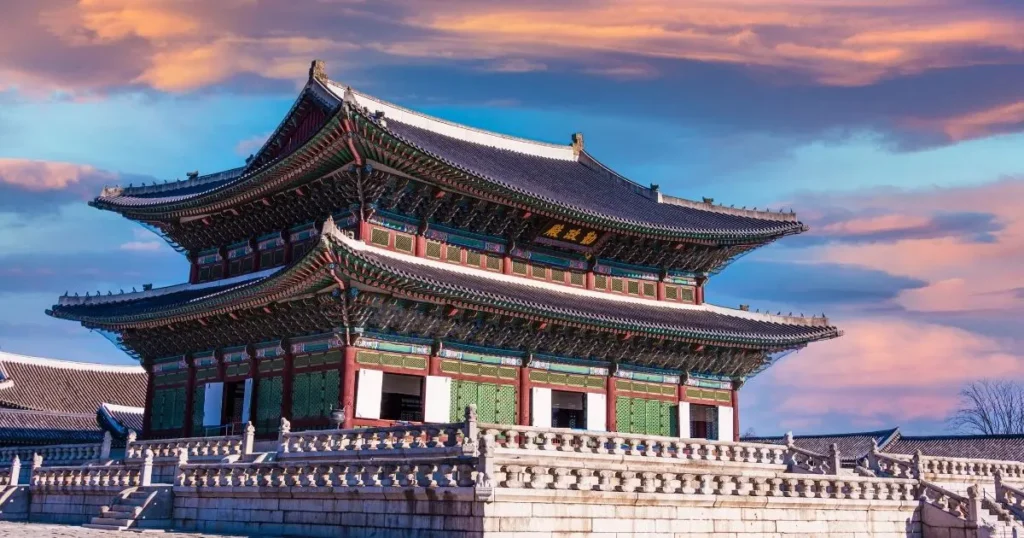
Once serving as a maritime landmark, this five-story, six-bedroom home continues to pique curiosity. Its owner, Emirati businessman Zakaria Doleh, claims he created it by trial and error using concepts he picked up from his travels. The construction took fifteen years, demonstrating the meticulous craftsmanship required to turn this unique concept become a reality.
Dubai Creek Golf & Yacht Club (completed in 1993)
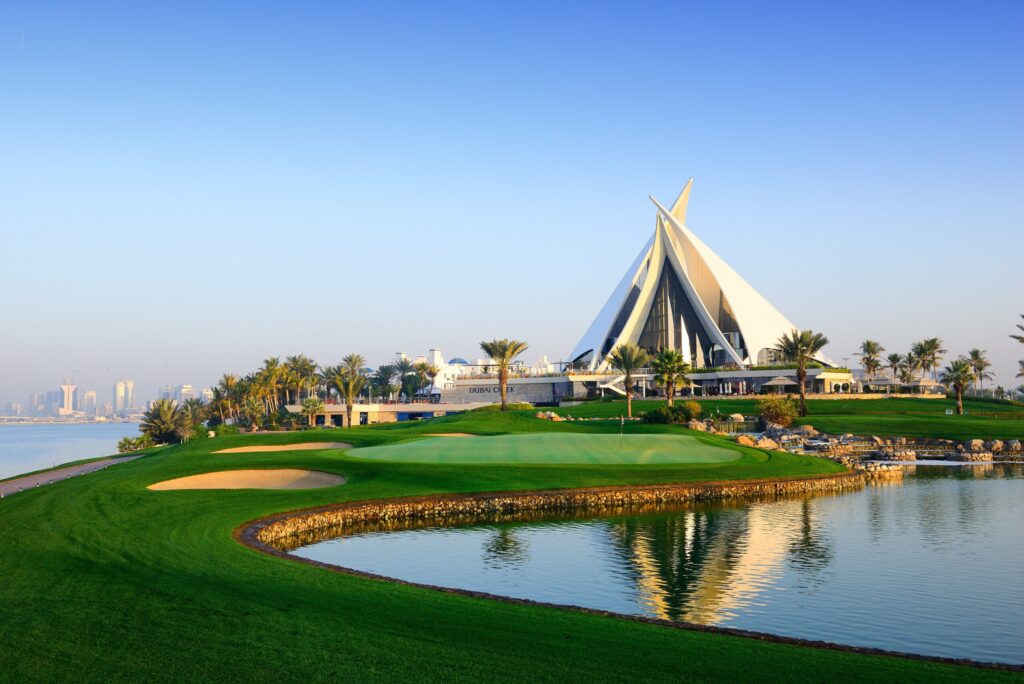
Brian Johnson created this distinctive building, which became well-known along Dubai Creek for its sail-shaped rooftop. After work started in the late 1980s, it was a well-known landmark along Dubai Creek by the next decade.
Emirates Towers (built-in 1999)
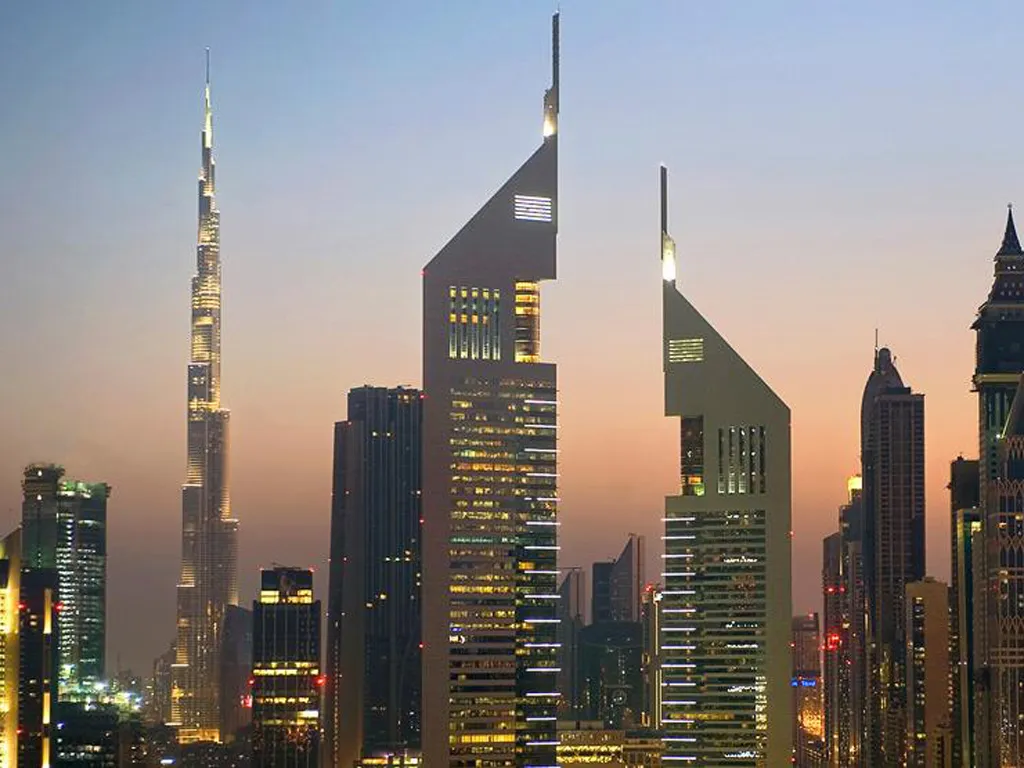
Norr Group Consultants International designed this twin-tower complex, which consists of Emirates Tower One and Emirates Tower Two. They developed as a vital component of Dubai’s business center.
Every one of these structures showcases a distinct facet of Dubai’s architectural development throughout the years, showcasing the city’s metamorphosis from a small commerce hub to an energetic international city.
Dubai’s Most Interesting Buildings (Recent Developments)
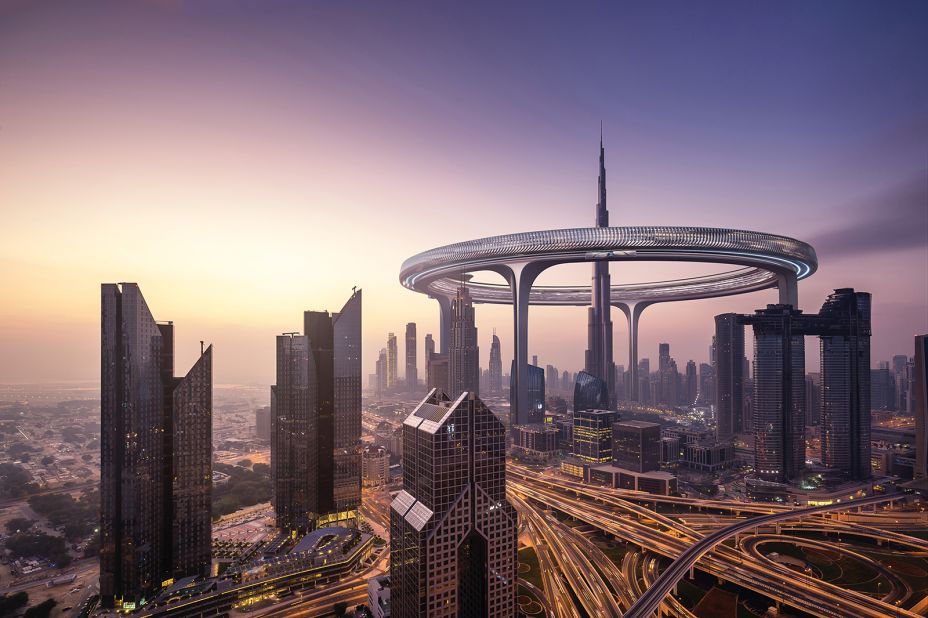
Cayan Tower
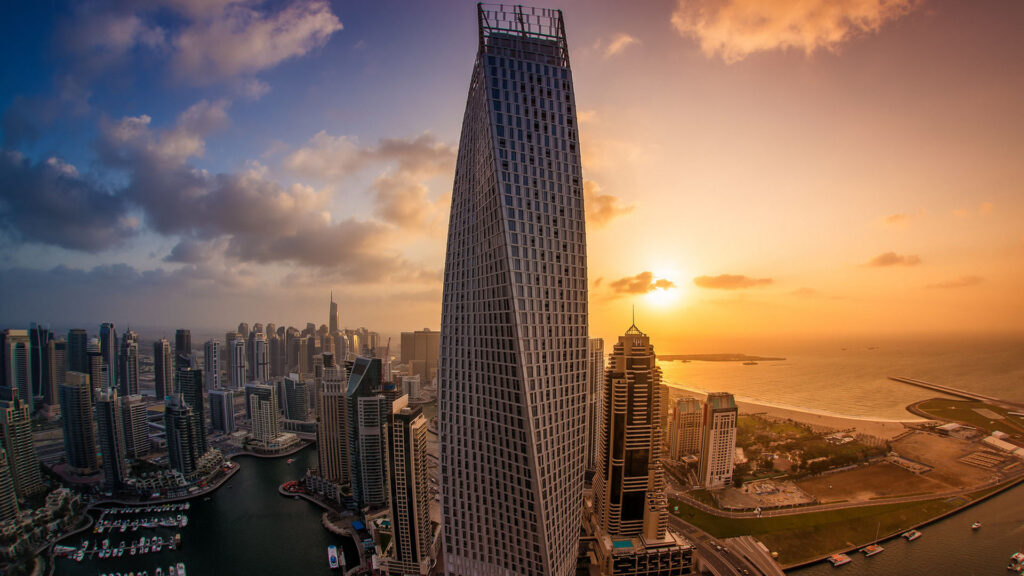
With a distinctive helical design that combines bold and delicate aspects, Cayan Tower stands out in the Dubai skyline. This residential skyscraper embodies the concept that a building’s shape should directly complement its structural framework. Despite having identical floor plates, each floor is slightly twisted compared to the one below, resulting in a full 90-degree rotation across the tower’s 307-meter height.
Beyond its visual appeal, its unique shape has several practical advantages. More people will be able to enjoy the marina and gulf views since it lessens the impact of wind and sun’s heat buildup. The tower’s perpendicular orientation to the water protects beachfront views for nearby homeowners while providing superior vistas from every floor.
Designed for the desert environment and the urban heat island effect, the structure uses staggered screen panels and prefabricated metal panels mounted on concrete columns to block the sun’s rays. Deep window sills provide shade and a screen-like effect, enhancing both interior comfort and exterior aesthetics.
Advanced computer modeling and wind tunnel testing helped the structural engineering team assess stresses and design unique building approaches. As one of them, a “jump form” method was implemented to maximize construction productivity by capitalizing on the building’s repeating structure. Furthermore, the building is reinforced by a central concrete pillar, which each story revolves around.
Dubai Museum
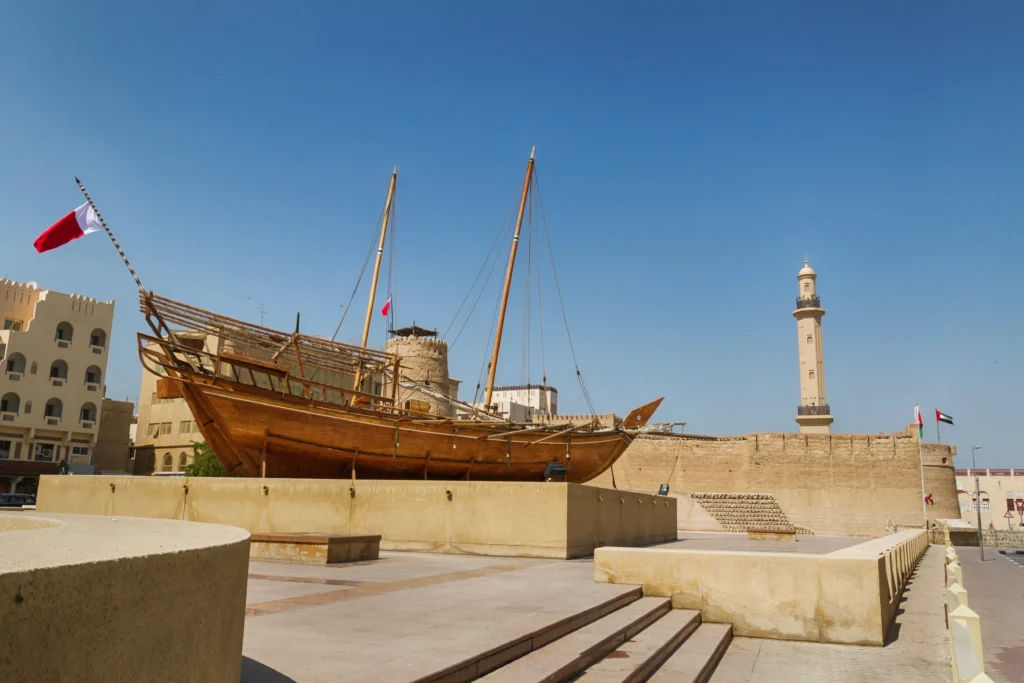
Launched in 1971 by the Ruler of Dubai, the museum showcases the traditional way of life in the Emirate of Dubai. Upon entering, guests are able to see the fort and its many exhibits. There are galleries inside that showcase the history and culture of the area, with an emphasis on the nineteenth century. Museum exhibits include pre-oil period dioramas, local antiquities, and relics from African and Asian nations that traded with Dubai. From 3000 BC forward, it keeps relics as well.
Within the multi-phase Al Fahidi Fort, the museum has an area of four thousand square meters. Thought to be the city’s oldest structure, the oldest tower in Dubai has been standing since 1787. The palace of the monarch, a garrison, and a jail were all part of the fort’s defensive function against attacks. The square-shaped fort, constructed from coral rock and mortar, has towers on each of its three corners. There is a towering dhow in a courtyard with subterranean tunnels and a rebuilt part of the medieval city walls close by. Both the Dubai flag and the UAE flag fly from the two cannons stationed at the main entrance.
The Dubai Frame
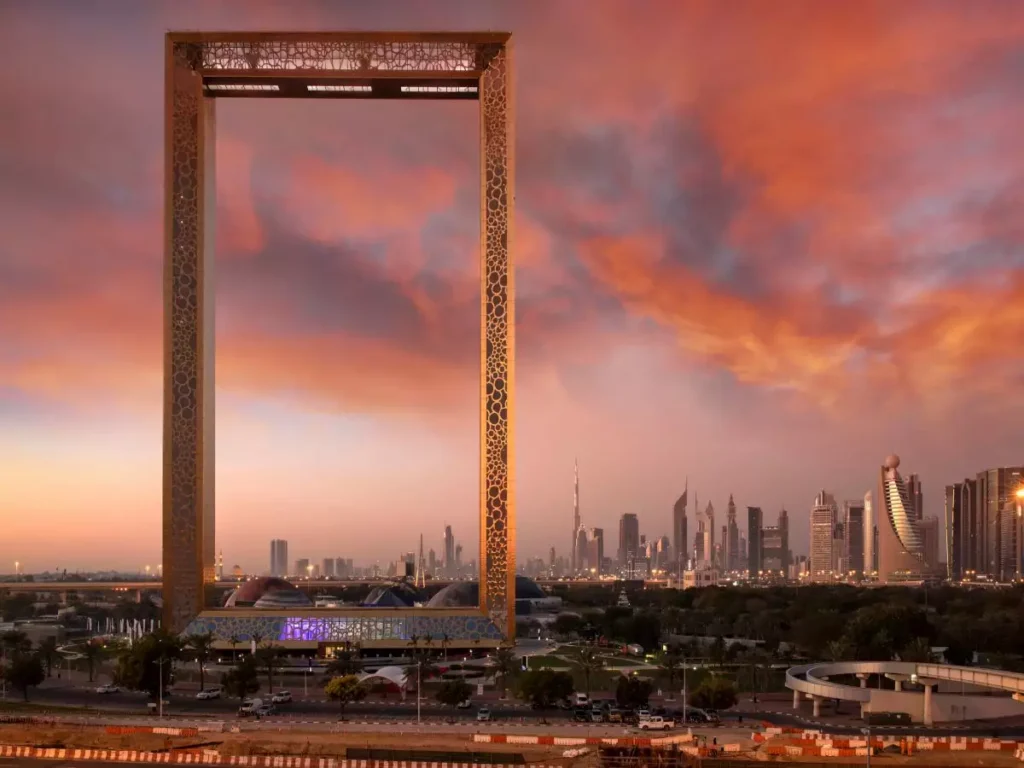
The Dubai Frame is a massive photo frame designed to connect old Dubai with the new, situated in Zabeel Park. What makes this place so special? Well, back in 2009, there was a competition hosted by ThyssenKrupp Elevator International to design the Dubai Frame. Out of 926 entries, Fernando Donis emerged as the winner with his visionary concept. Instead of adding yet another building to Dubai’s bustling skyline, Donis envisioned a structure that would offer panoramic views of the city’s iconic landmarks.
His innovative idea earned him $100,000 and gave birth to the Dubai Frame. Constructed with reinforced concrete, steel, aluminum, and glass, the frame stands tall at 93 meters, with a central section of glass measuring 25 meters thick enough to support substantial weight.
A great deal of effort and precision went into positioning the Dubai Frame. It had to be strategically placed to frame both old and new Dubai attractions and landmarks on either side, creating a seamless blend of past and present.
Dubai Old City
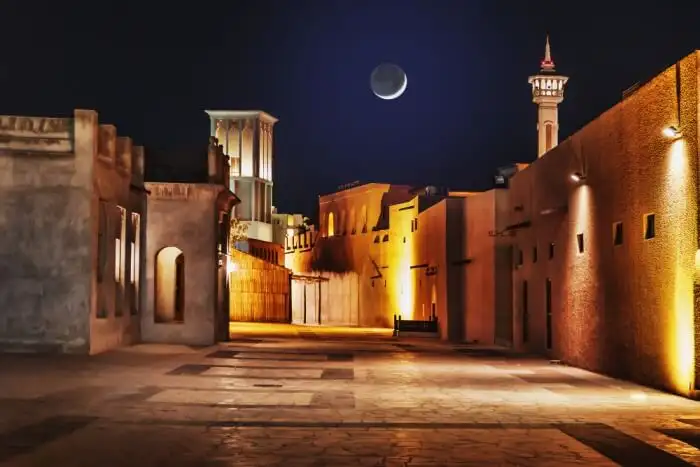
Records indicate that in the early 1800s, Dubai was a walled city, with the construction of Al Fahidi Fort around the same time the city became a dependency. The wall on the Bur Dubai side stretched from the Al Fahidi Historical Neighborhood through Al Fahidi Fort and ended at the Old Souk.
Dubai’s history dates back to 3000 BC, during the Bronze Age. By the 5th to 7th centuries AD, Dubai had become a prominent trade route linking Oman to what is now Iraq. At that time, the people of Dubai made a living through fishing, pearling, and boat building. The trade routes gained fame, attracting Portuguese and European traders.
Walking through the old streets, contrasting sharply with the modern skyscrapers and record-breaking wonders, visitors can witness the simplicity and history that bring Dubai to life. Understanding Dubai’s origins is essential for grasping its growth, as the city has managed to maintain much of its original character despite the rapid development around it.
The Bastakiya quarter brims with history and tradition. It’s one of the oldest neighborhoods in Dubai, constructed in the 19th century by the Iranian community drawn to the Emirate through trade along the Dubai Creek. The buildings in Bastakiya narrate their own tale, crafted from shells and coral and remaining unchanged to this day. Today, the community has evolved into a mixed cultural hub for both Dubai residents and visitors alike.
Burj Al Arab
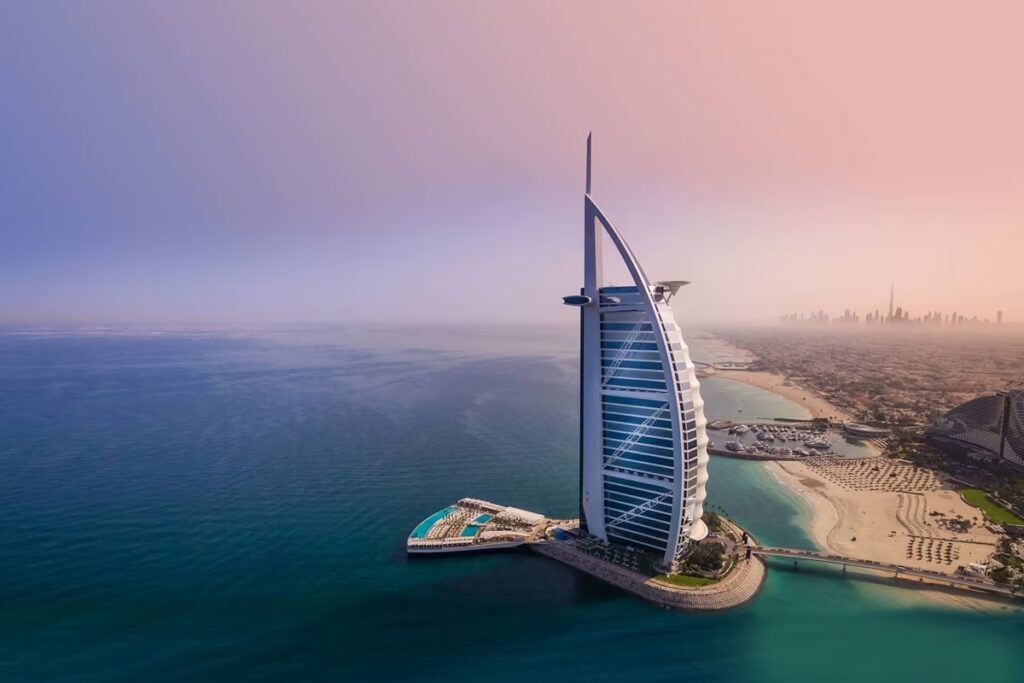
The Burj Al Arab, managed by the Jumeirah Hotel group, stands as one of the world’s tallest hotels, even though 39% of its height is non-occupiable space. Perched on an artificial island 280 meters from Jumeirah Beach, it’s linked to the mainland by a private curving bridge. Its distinctive sail-like shape and a helipad atop the roof at 210 meters above ground make it an iconic sight.
Designed by architect Tom Wright of the multidisciplinary consultancy Atkins, with construction managed by Canadian engineer Rick Gregory, the hotel’s construction began in 1994. It involved up to 2,000 workers at its peak and took three years to reclaim land from the sea and less than three years to build the hotel itself. The building has over 9,000 tons of steel and 70,000 cubic meters of concrete, including skeletal structural frames.
Despite its impressive construction, the Burj Al Arab has faced criticism, particularly regarding its extravagant decor. This juxtaposition highlights the ambitious urban imagination fueled by immense wealth.
Burj Khalifa
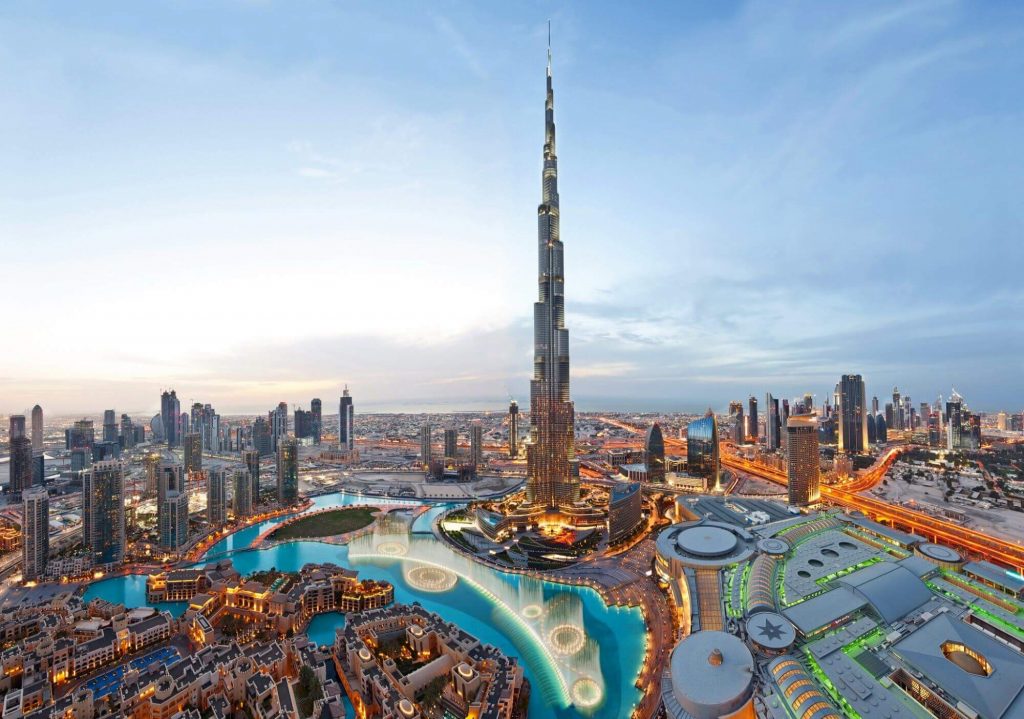
At 829.8 meters in height, the Burj Khalifa—formerly known as the Burj Dubai—stands as a towering skyscraper. It opened to the public in 2010. Upon completion in 2009, it surpassed Taipei 101 to become the world’s highest structure and skyscraper. Outside work started in 2004, and it took another five years to complete. Reinforced concrete makes up the bulk of the building, with structural steel from East Berlin’s Palace of the Republic—the old East German parliament—supplying a small portion.
The Burj Khalifa, a massive mixed-use complex that opened to the public in 2010 as part of Downtown Dubai, is intended to serve as the project’s focal point. The goal of its creation was to attract worldwide attention and diversify Dubai’s economy away from oil. In recognition of Khalifa bin Zayed Al Nahyan, emir of Abu Dhabi and president of the UAE, who provided financial assistance to Dubai, the structure bears his name. By shattering many previous records, the Burj Khalifa solidified its position as the world’s tallest structure.
Adrian Smith of Skidmore, Owings & Merrill—the firm best renowned for constructing Chicago’s Sears Tower—led the design team that created the Burj Khalifa, taking architectural cues from regional Islamic landmarks, including the Great Mosque of Samarra. A central core and wings sustain its height, creating a Y-shaped floor layout that optimizes residential and hotel space. This 57-story skyscraper has 8 escalators and a cladding system that can withstand the scorching summers of Dubai.
The Emaar developers ran into financial problems throughout the project, which led to the renaming of the building to the “Burj Khalifa” when the ruler of the United Arab Emirates, Sheikh Khalifa, donated additional funds. Downtown Dubai and other nearby high-density projects and malls made a killing, thanks to the tower’s placement, even if the skyscraper itself probably wasn’t that lucrative.
The Jumeirah Beach Hotel
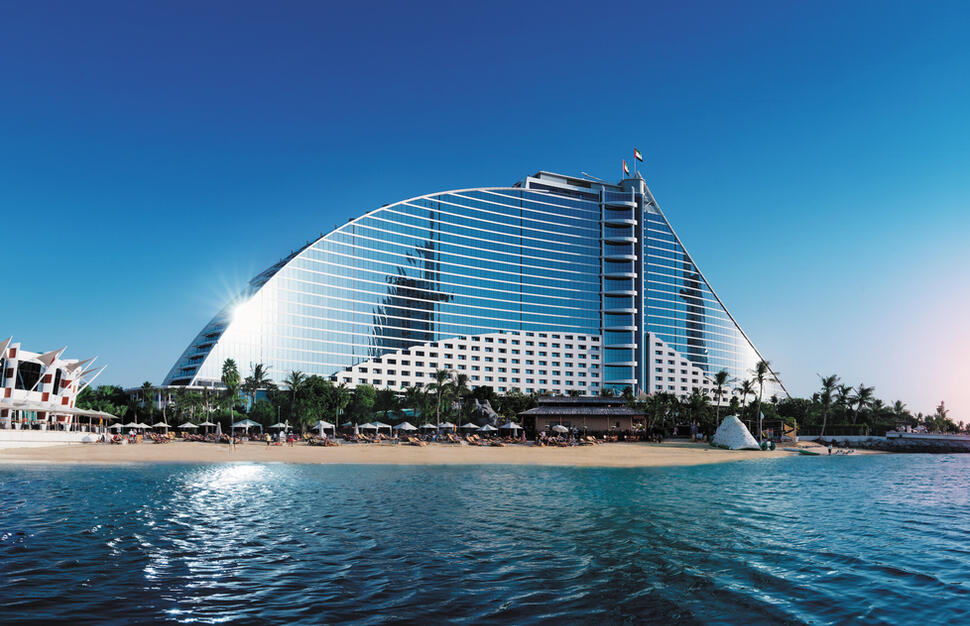
With 598 rooms and suites, 19 beachfront villas, and 20 restaurants and bars, this hotel, opened in 1997 and managed by Jumeirah, has it all. Located on a man-made island that was previously part of Chicago Beach, it overlooks the area presently occupied by the Burj Al Arab and the Jumeirah Beach Hotel. Even before Dubai started its redevelopment efforts, the location was named for the Chicago Bridge & Iron Company, which operated floating oil storage tankers there.
Despite the old Chicago Beach Hotel’s 1997 demolition, the name “Dubai Chicago Beach Hotel” was used as the public title of the project while the Burj Al Arab was being built. A further announcement on the hotel’s rebranding came from Sheikh Mohammed bin Rashid Al Maktoum. In 1997, the Jumeirah Beach Hotel was the ninth-tallest structure in Dubai, with an initial height of 93 meters. Although it is no longer included among the world’s 100 tallest structures, the Burj Khalifa remains a beloved symbol of Dubai.
The Opus
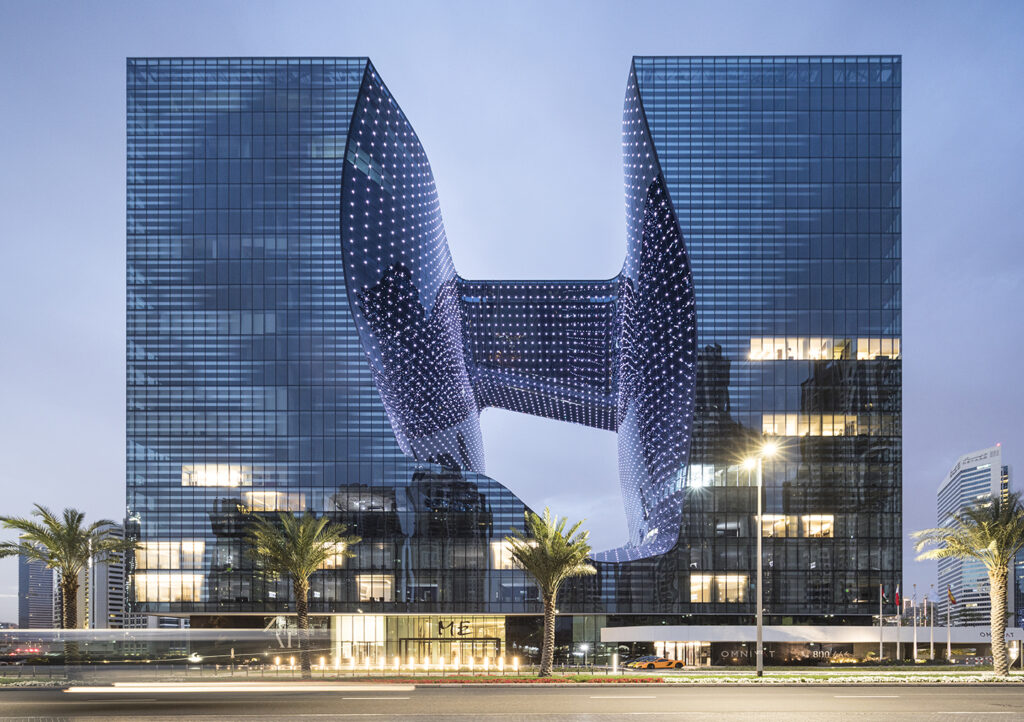
Recently built, the ME Dubai hotel at the Opus by Zaha Hadid Architects has unique curved balconies and furnishings designed by Zaha Hadid Design. The Opus is a remarkable mirrored glass building with a hotel, offices, serviced apartments, and a variety of eating options located in Dubai’s Burj Khalifa neighborhood. With its exterior completed last year, the ME Dubai at the Opus is the only hotel in the world with interior design by the late Zaha Hadid.
From the outside, the structure seems like a massive cube with a distinctive vacuum across the middle, but in reality, this illusion is the result of two towers connected at the top and bottom. “The precise orthogonal geometries of the Opus’ elemental glass cube contrast dramatically with the fluidity of the eight-storey void at its center,” says Christos Passas, project director at Zaha Hadid Architects (ZHA).
A three-story bridge that is 71 meters above the ground spans the space between the two buildings, and at its foot is an impressive four-story atrium. The ME Dubai hotel has 74 guestrooms and 19 suites, and it has been open since March 2020. It has three stories of galleries with projecting balconies around the room, under the glass roof that serves as Opus’s famous void.
The Green Planet
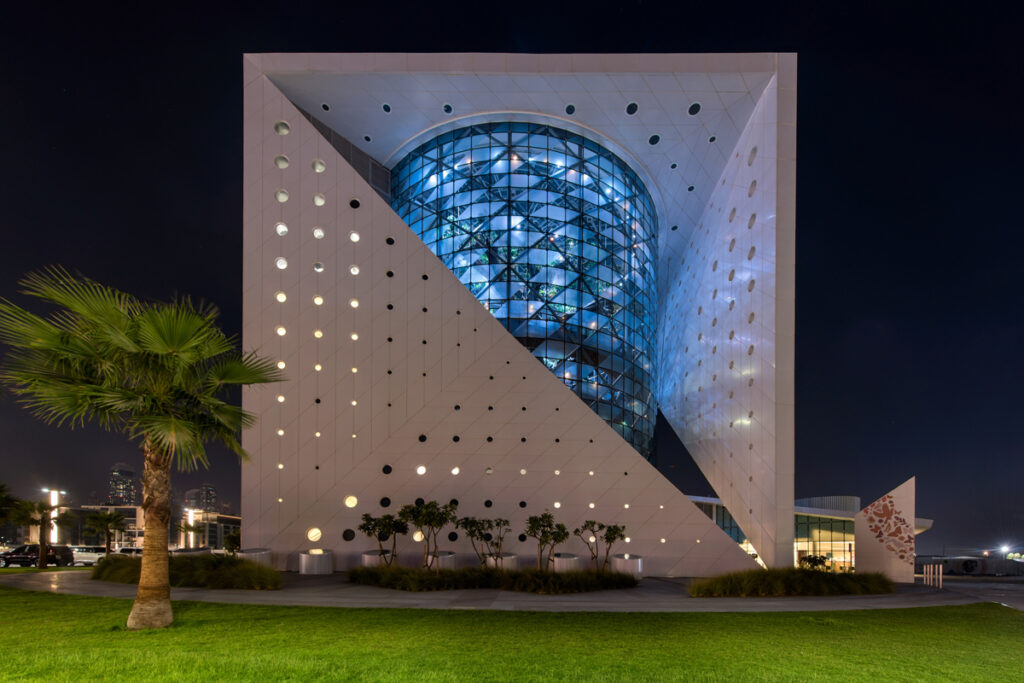
Modeled after the world’s Equatorial Rainforests, The Green Planet Dubai is an interactive science facility. Its distinctive construction has the appearance of a delicate origami cube encasing a cylinder-shaped living biosphere. The cube contains nearly 3,000 different kinds of tropical plants, fish, animals, and insects that live in Dubai’s desert habitat. On the outside, it has vital support areas.
The center’s mission is to provide Dubai locals with an opportunity to learn about and get an understanding of the fragile Equatorial ecosystems, highlighting the need for their preservation for a sustainable future. By simulating the vertical zones of a kapok tree, the visitor experience aims to illustrate how different rainforest species live at different elevations, ranging from the high canopy to the flooded riverbanks.
Starting at the bottom of the structure, guests explore a model of a flooded rainforest river that includes an aquarium with freshwater fish and degraded riverbanks covered with Amazonian ferns and mosses. They ride fast lifts to the top branches of the Kapok tree. After which they can explore different rainforest environments as they descend via spiral ramps. Visitors can appreciate the vast variety of the rainforest, from butterflies and birds in the canopy to snakes and leaf-cutter ants on the forest floor.
Under the direction of Grout McTavish Architects, an international team of specialized engineers, biologists, and animal specialists worked together to realize this idea in the harsh desert environment of Dubai, resulting in the creation of an actual rainforest experience within the city.
Jumeirah Mosque
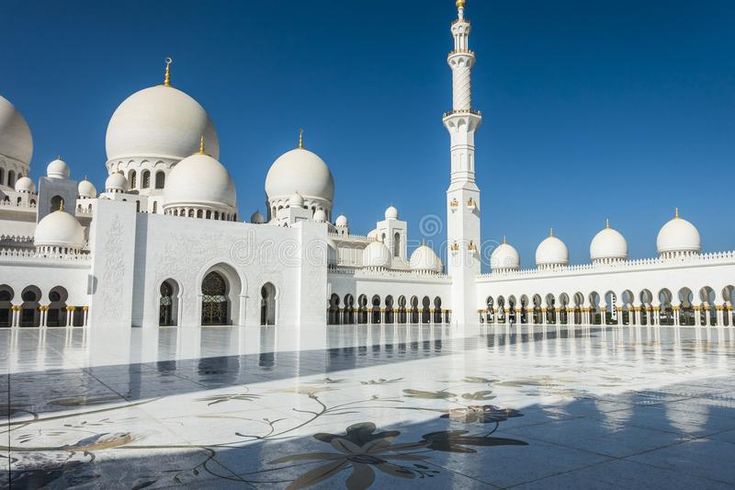
With its classical style, the Mosque stands out against the surrounding contemporary skyscrapers in Dubai’s skyline. It displays the architectural style of the Fatimids, which is renowned for its Islamic patterns from ancient Egypt. The mosque has a humble aspect despite its enormous size and fine decorations.
The Jumeirah Mosque took seven years to build, starting in 1975 and ending in 1979. Interestingly, it’s one of the few mosques in the United Arab Emirates that allows non-Muslim guests. The mosque, which can hold up to 1500 worshipers, was a gift from the late Sheikh Rashid bin Saeed Al Maktoum. Its architecture is a synthesis of several cultural elements, with Egypt and Syria serving as inspiration.
Museum of The Future
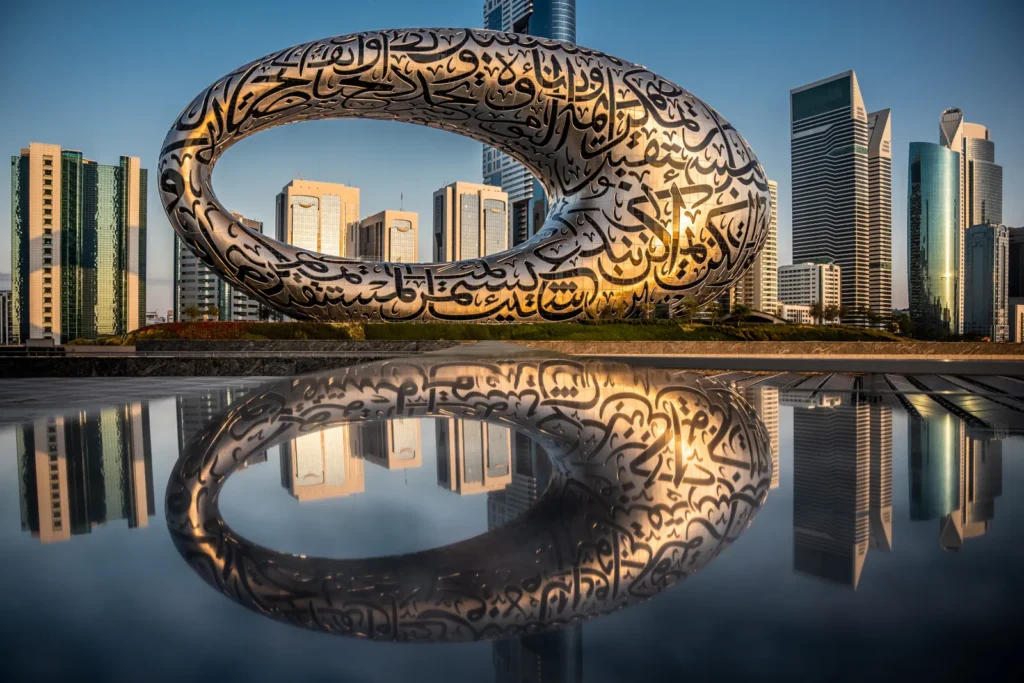
One of the most beautiful structures in the world, Dubai’s Museum of The Future is proudly located along Sheikh Zayed Road as a representation of the city’s progressive outlook. Steel and glass cover its outside, which creates an eye-catching asymmetric torus with elaborate Arabic lettering.
The green hill, the building itself, and the emptiness are three essential components that architect Shaun Killa purposefully included in the building’s design to provide an insight into Dubai’s future goals. These components stand for the planet, human inventiveness, and the boundless potential of the future, in that order.
Atlantis The Royal
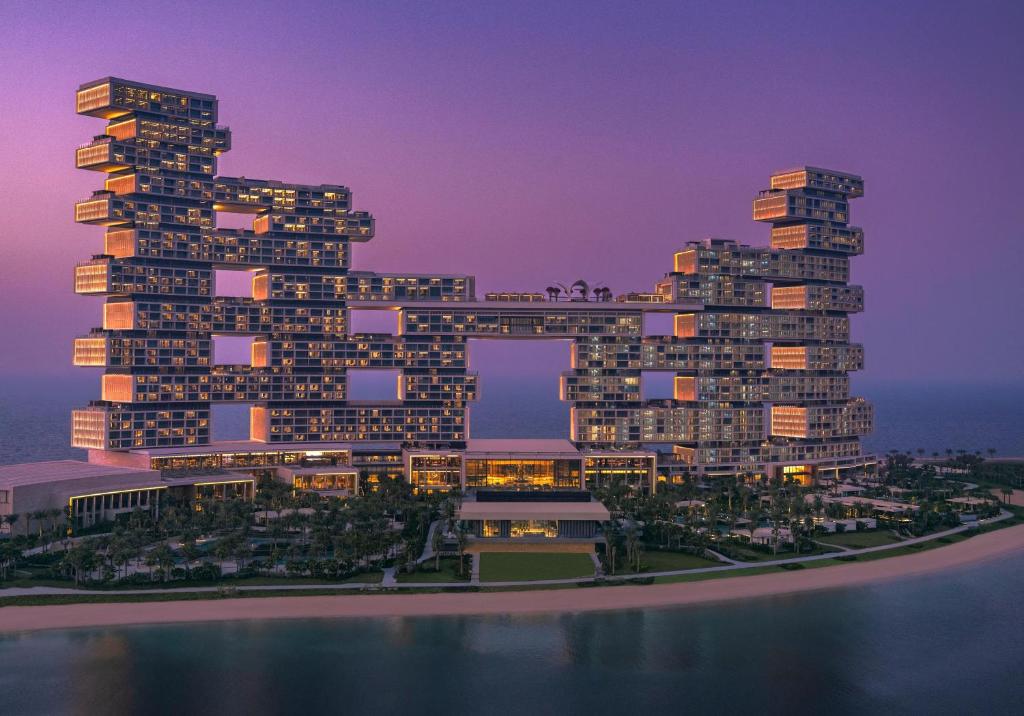
The construction of this home will redefine modern architecture standards, influencing architects throughout the globe and permanently changing Dubai’s skyline. Sybille de Margerie of Paris meticulously selected the interiors. The sleek and contemporary façade is thanks to Kohn Pedersen Fox Associates (KPF), a NYC-based firm.
The seamless integration of indoor and outdoor areas in this structure is revolutionizing the concept of urban living. Atlantis The Royal is really two separate constructions, each having its own individual personality and shape despite its cohesive appearance.
Mega Underway Projects: Future City in Dubai
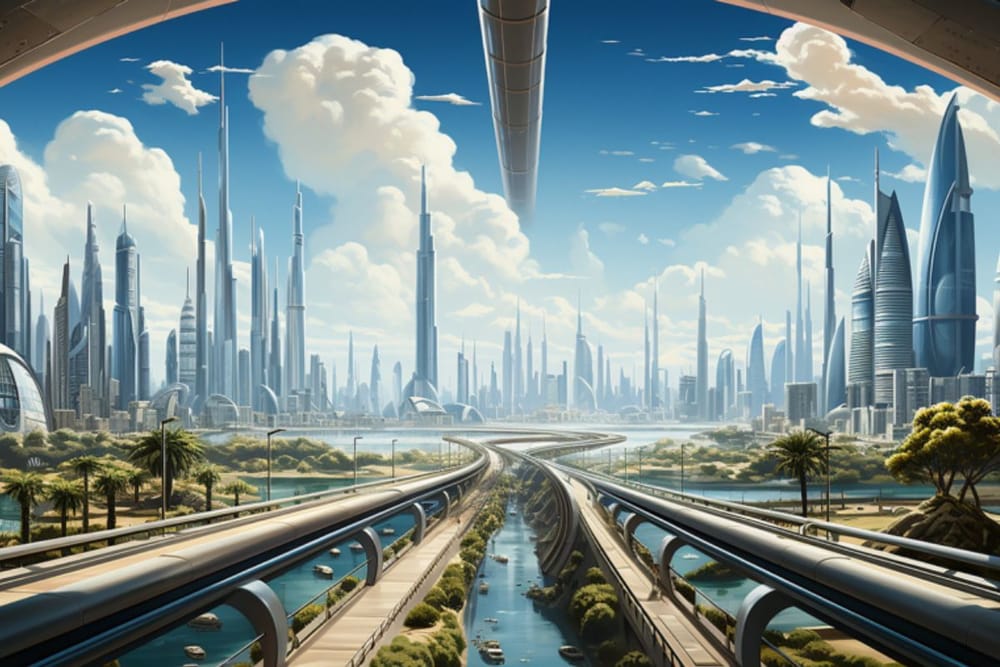
Our list below displays what’s currently being developed or has recently opened. Please note that original completion dates might be subject to change.
Al Quoz Creative Zone
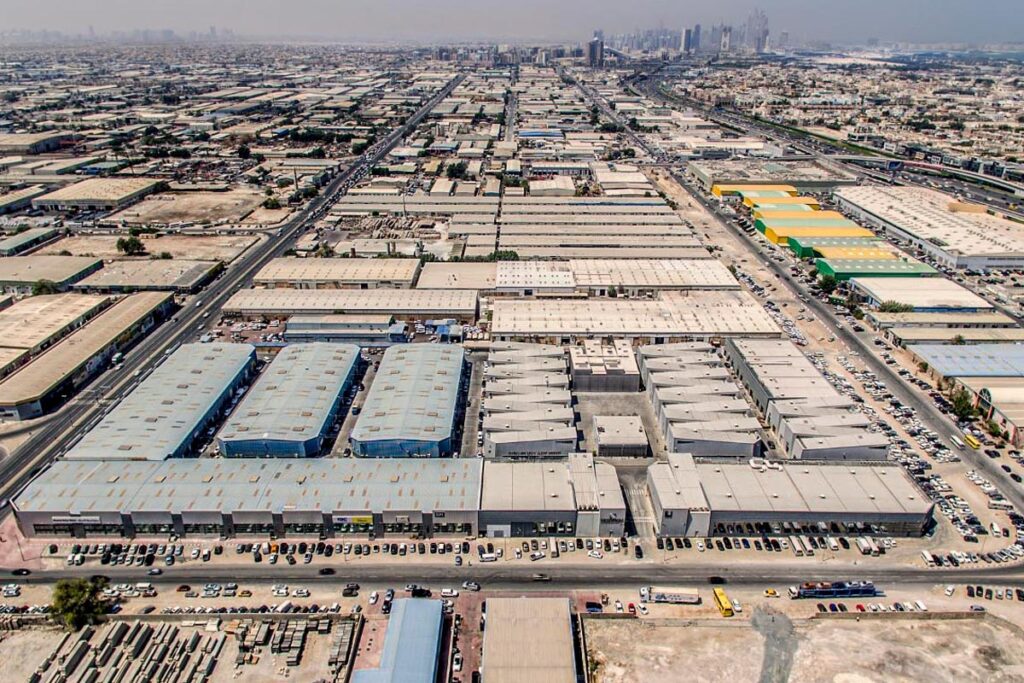
Dubai Municipality is spearheading the transformation of this area into one of the world’s largest creative hubs. The plans received approval from the Dubai Culture & Arts Authority and a Member of the Dubai Council.
Once finished, it will offer housing for over 8,000 individuals and draw approximately 33,000 visitors daily. The zone’s population of creatives is projected to surge from 900 to 20,000 upon completion.
Mohammed bin Rashid Solar Park

This project is continuously expanding. As of the end of October, it could produce 1,827 megawatts of power. Located in the Dubai desert, the facility is set to reach a total capacity of 5,000 MW by 2030.
It stands as the largest single-site solar park globally, with investments totaling about Dh50 billion ($13.61bn). Once fully operational, it will prevent over 6.5 million tonnes of carbon dioxide emissions annually.
The sixth phase of the park will start operating gradually, beginning in Q3 2025.
Dubai Islands
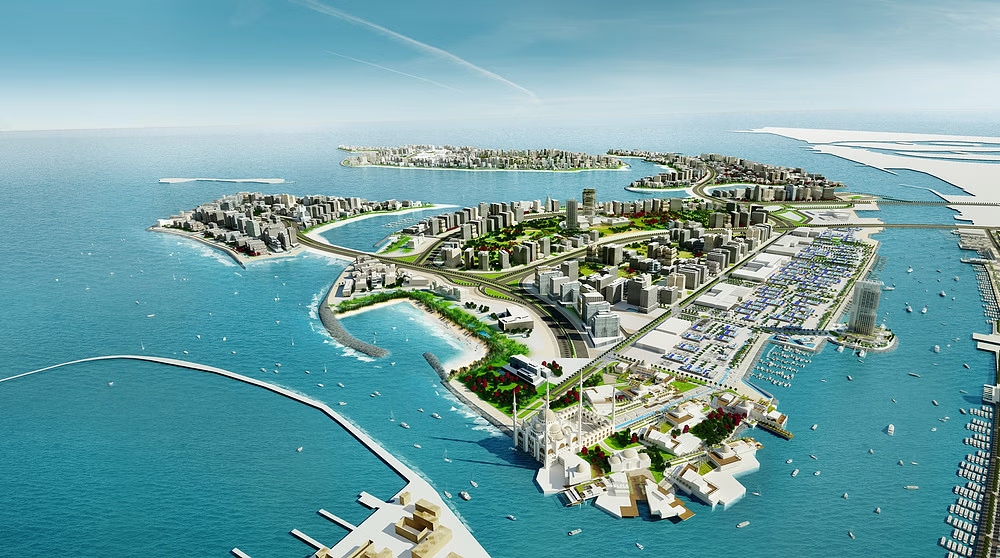
Nakheel, the developer, has renamed Deira Islands as Dubai Islands, unraveling a new vision to revolutionize waterfront living.
The project will consist of five islands covering a total area of 17 square kilometers. It will feature 2 square kilometers of parks and open spaces. Over 20 kilometers of beaches and premium golf courses with stunning views of the Arabian Gulf.
With a well-connected network of marina promenades and pathways for water and road transportation, walking, and biking, Nakheel aims to support the development of vibrant and healthy communities in line with the Dubai 2040 Urban Master Plan.
Moreover, the islands will host more than 80 resorts and hotels. Making it a prime destination for tourists and residents alike.
Conveniently located near Dubai International Airport, Dubai Creek, Jumeirah, and Downtown Dubai, the islands offer easy access to key areas of the city.
Uptown Tower
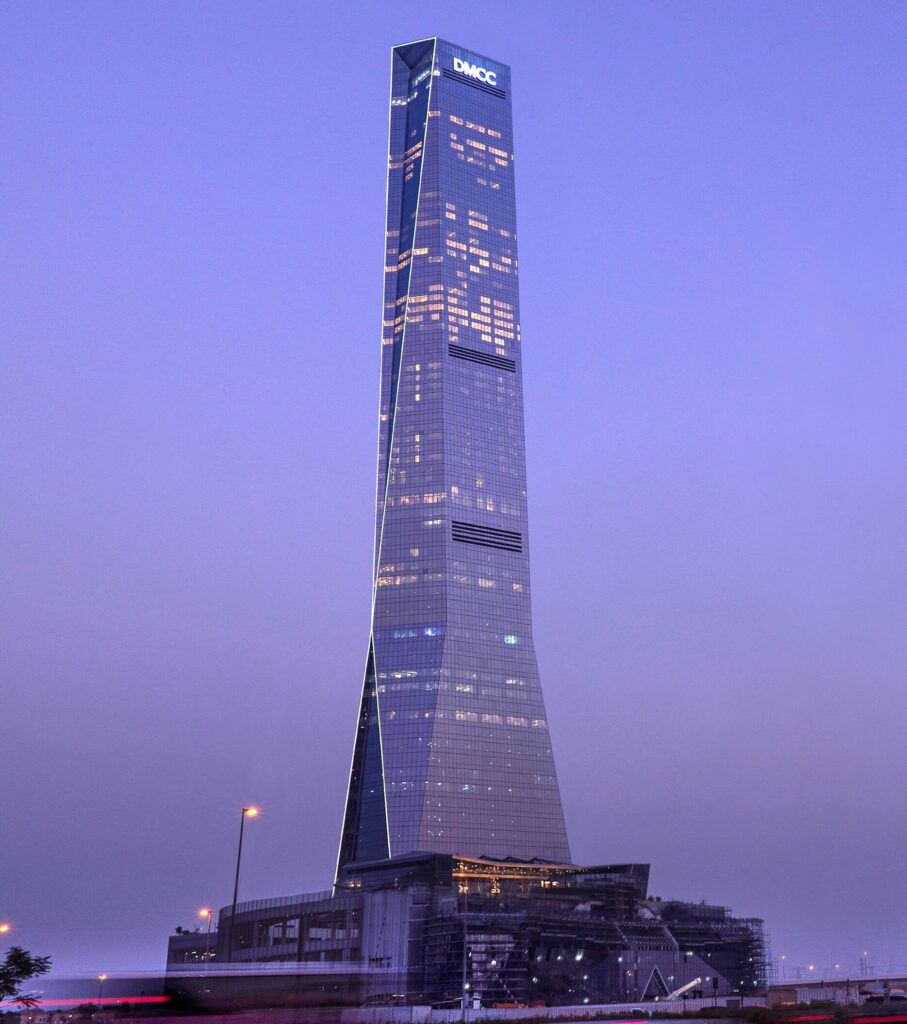
With its newly completed exterior, the 79-story high-rise is almost complete. This will ascend to become Dubai’s 14th-highest structure at 340 meters.
The skyscraper will be ready for handover later this year, according to the Dubai Multi Commodities Centre.
The first of two “super-tall towers” in the region, it is located in the Uptown Dubai District of the DMCC.
Natural History Museum
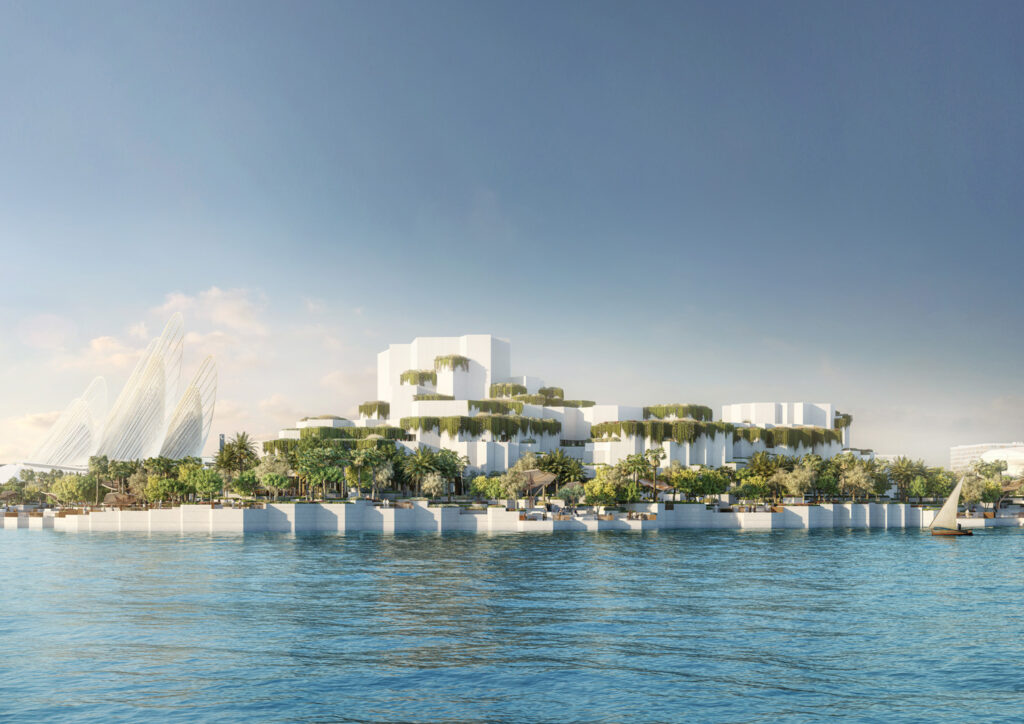
The Abu Dhabi Department of Culture and Tourism revealed plans for a museum at Saadiyat Island’s Cultural District in March.
With a completion date of the end of 2025, the Natural History Museum Abu Dhabi project is now under development.
The museum will include exhibits that transport visitors from the early cosmos to possible future scenarios over a period of 13.8 billion years.
Hatta tourism
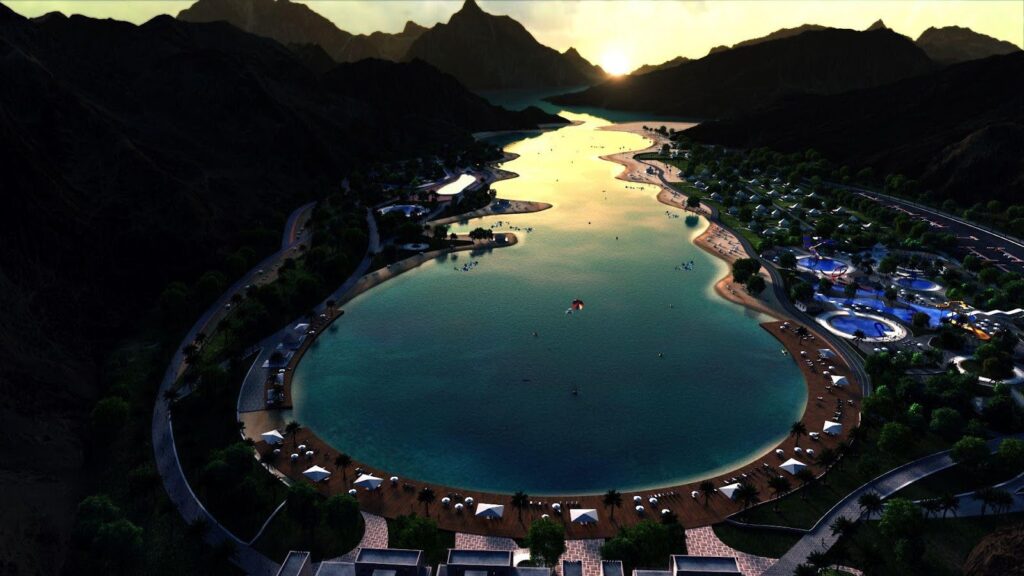
The Vice President and Ruler of Dubai recently disclosed his intentions to establish Hatta as a premier tourist destination. The town will now include a lake, an inland beach, and a cable-driven mountain train, according to the revised plan.
Situated close to Oman’s border, Hatta has emerged as a favorite destination for thrill-seekers. Particularly those who like mountain riding and kayaking.
One Za’abeel
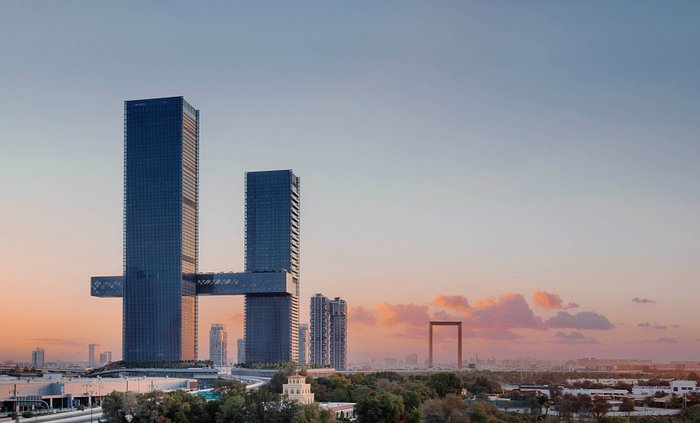
A 7,700-ton bridge connects these two skyscrapers, which are located next to Dubai’s Trade Center. When completed, they’ll include a hotel, retail spaces, office buildings, and opulent residences. Tower B peaked sooner at 241 meters, while Tower A reached its ultimate height of 304 meters in April 2021.
Ciel Dubai
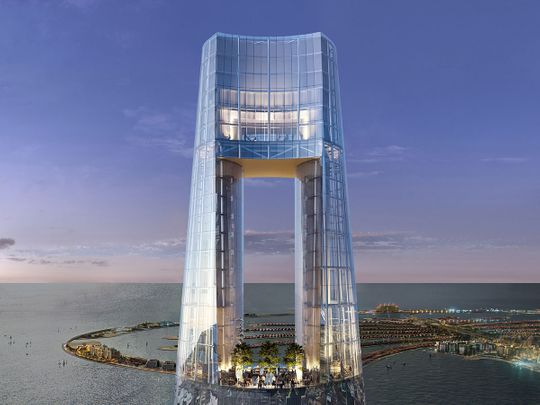
The 356-meter Gevora Hotel in Dubai holds the title of the highest hotel in the world. But a new record may shortly surpass it. With a projected height of 365 meters, developer The First Group has revealed that construction is already underway on the Ciel Tower in Dubai Marina. When finished, it will have 82 stories with over 1,000 opulent hotel rooms and a glass observation deck with breathtaking 360-degree views.
How Dubai Made Architecture and Architecture Made Dubai
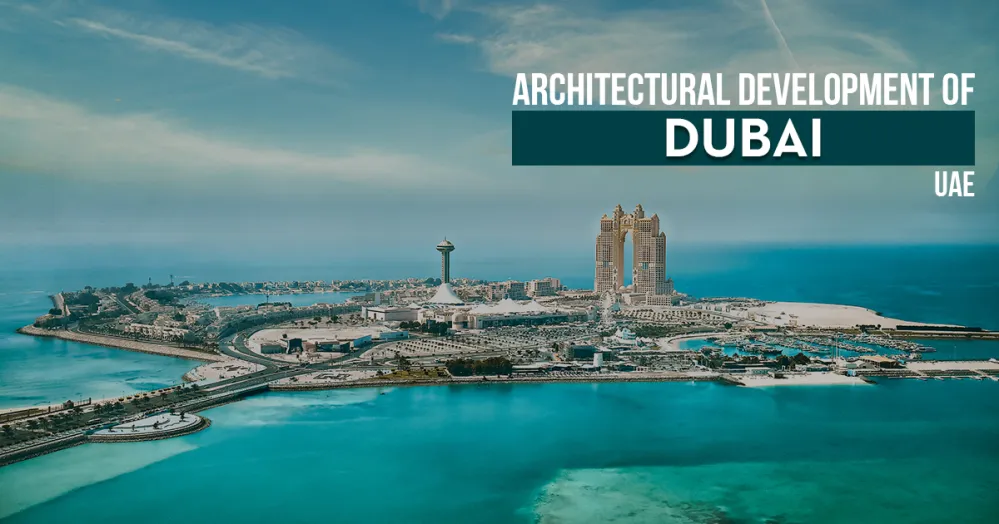
Indian, Persian, and Islamic architectural styles from the late 1800s had a significant effect on early architecture that is still evident today. The weather, social and religious traditions, the desert landscape, and the materials available for construction greatly impact design decisions. The weather, social and religious traditions, the desert landscape, and the materials available for construction greatly impact design decisions. Creating long-lasting, easily-used structures that were appropriate for the heat was the first concern.
Dubai’s Prelude to Serious Development
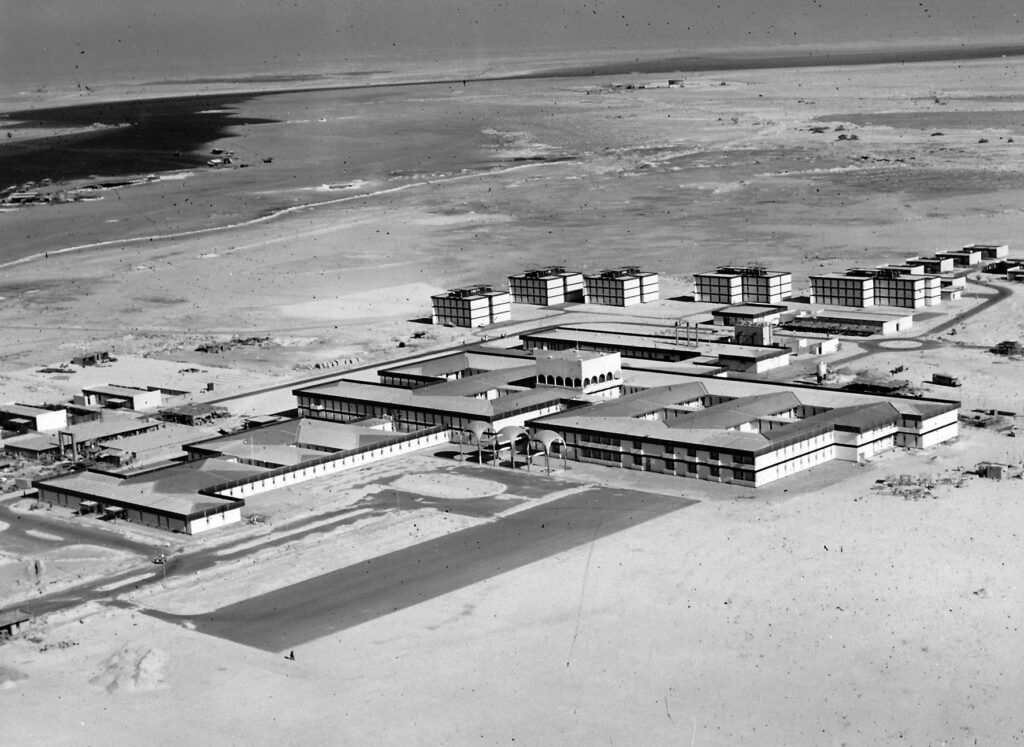
Dubai’s architecture and infrastructure started to take form in the early 1960s and 1970s. Often called “The Sheikh Rashid years.” This was the time when HH Sheikh Rashid bin Saeed Al Maktoum started the city’s growth and laid the foundation for the Dubai of today. Sheikh Rashid, inspired by the vision of British architect John Harris, started construction initiatives. They turned Dubai from a sleepy fishing hamlet into a modern city.
In order to provide a clear route for urban growth, Harris was instrumental in the creation of Dubai’s first master plan. It included vital infrastructure, including road networks. Consequently, the United Arab Emirates’ goal of Dubai’s evolution into a contemporary metropolis became more real.
In a comparatively short amount of time, Sheikh Rashid’s leadership brought about amazing improvements. In the six years of his reign, he brought flowing water to all citizens. Built a contemporary port and stimulated trade along Dubai Creek. Dubai also saw the opening of its first modern hotel. The construction of an airport landing strip and the installation of street lights. This allowed visitors to enjoy breathtaking vistas of the cityscape at night. Sheikh Rashid’s actions changed Dubai in a matter of decades, accomplishing goals that other towns took a century to achieve.
Architectural Skyline that did not simply Rise from the Sands
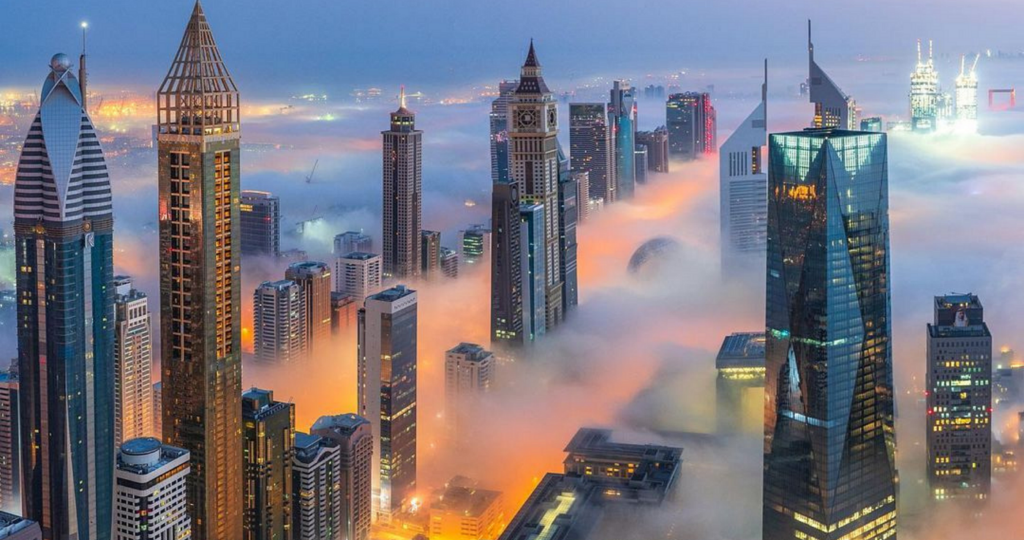
Harris took on the task of creating a development strategy to promote Dubai and attract investors from across the world. In the 1970s, he and other specialists carefully documented Dubai’s incredible metamorphosis.
With millions of people flocking to the Emirate to support Harris’s urban vision, Dubai became a center of opportunity. People discovered new opportunities and fresh starts among the sea of building sites and rising skylines.
The discovery of oil sparked a tremendous wave of growth. It left the city covered in a wide variety of architectural styles. Dubai then set out to build the biggest and most beautiful buildings that were possible. Leaving a trail of jealousy, adoration, and praise in their wake.
In order to construct aesthetically arresting and inspirational structures, architects looked to the future. They gave priority to innovation, sustainability, and a fusion of traditional, classical, and contemporary styles.
Rising like a Phoenix from the Sands: When Did Dubai Become Popular
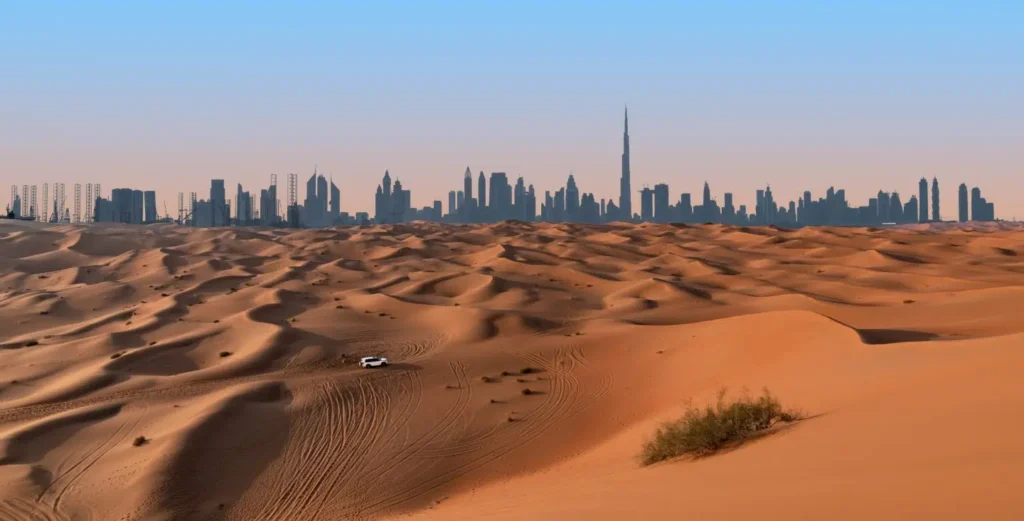
Recent construction projects in Dubai, including its magnificent Ferris wheels and underwater resorts, are a far cry from the initial architectural concept of John Harris. However, the street plans of “old Dubai” remain faithful to Harris’s original.
Changes in the economy, a desire for innovation, and worldwide strategy have all influenced the city’s urban growth. These elements have helped Dubai gain recognition across the world for its futuristic buildings and breathtaking skylines.
When did Dubai start developing? The city, often known as the “new Dubai,” started to take shape at the beginning of the century. Moreover, there have been significant changes to its terrain over the last 20 years. Attracting leading contemporary architects willing to contribute to its growth, Dubai has become a hub for innovative design.
With the world’s tallest tower, a seven-star hotel, and an artificial archipelago modeled after the seven continents, the city has it all today. Nonetheless, Dubai’s success has been characterized by both booms and busts. These have strengthened the city’s will to adapt and keep moving forward.
Dubai Then And Now…
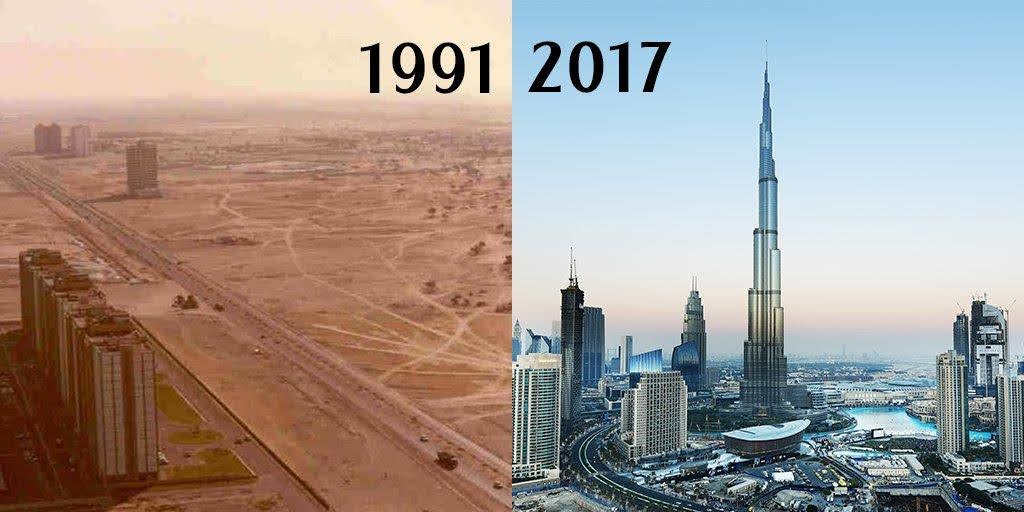
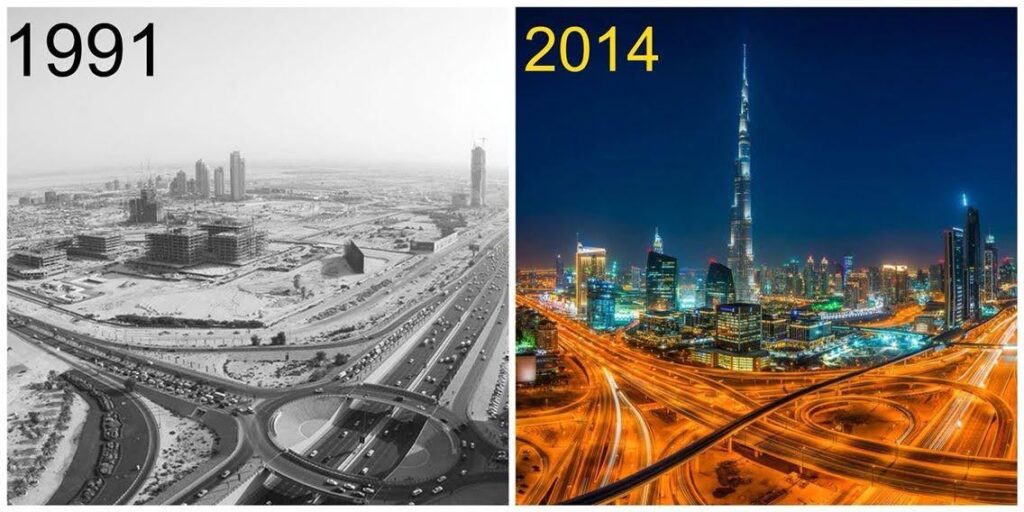
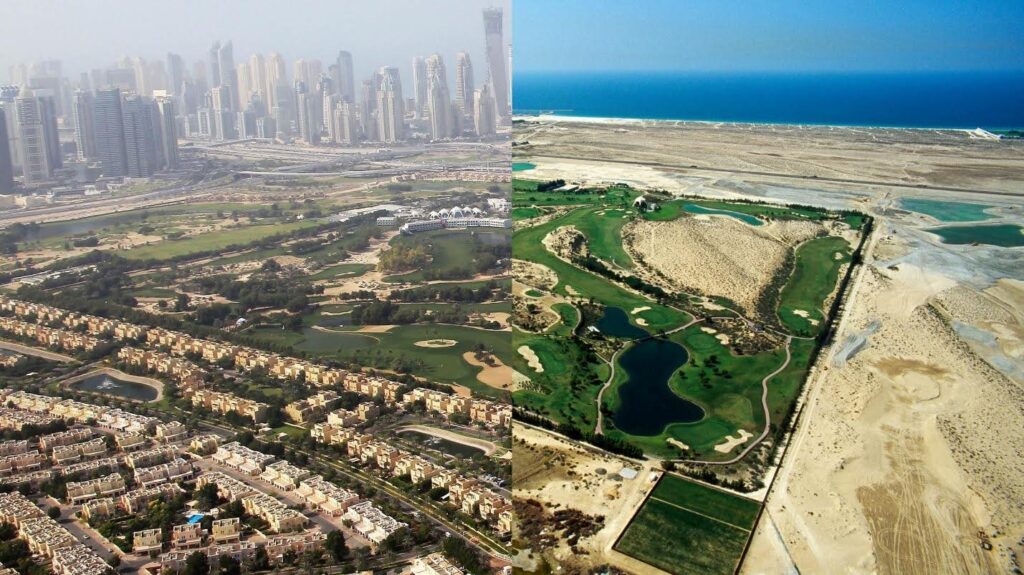
Sheikh Zayed Road In 1990 Vs Now
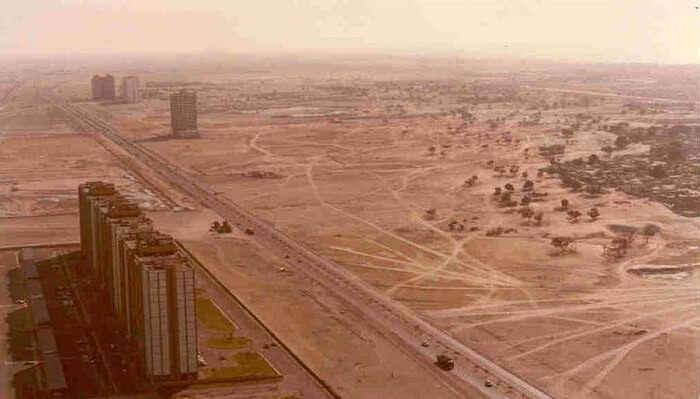
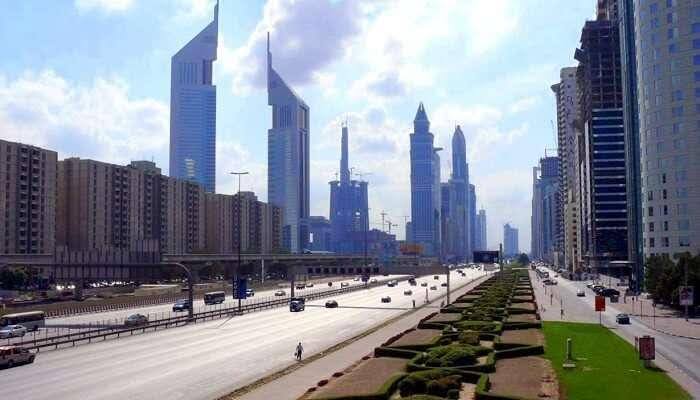
Dubai Marina In 2000 Vs Now
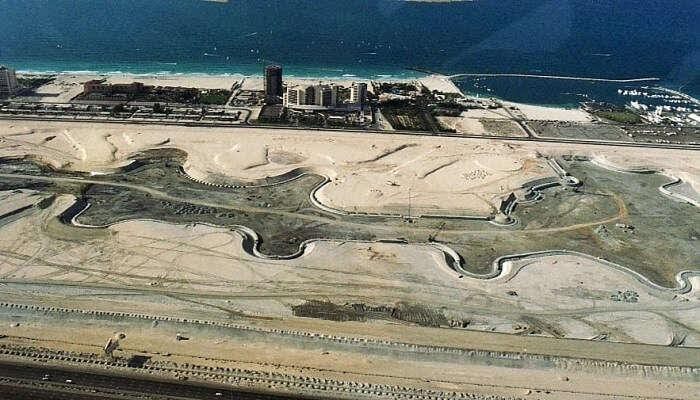
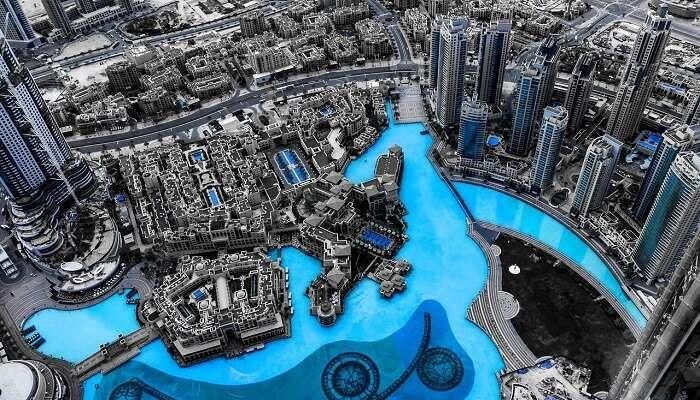
Dubai Waterfront In 1954 Vs Now
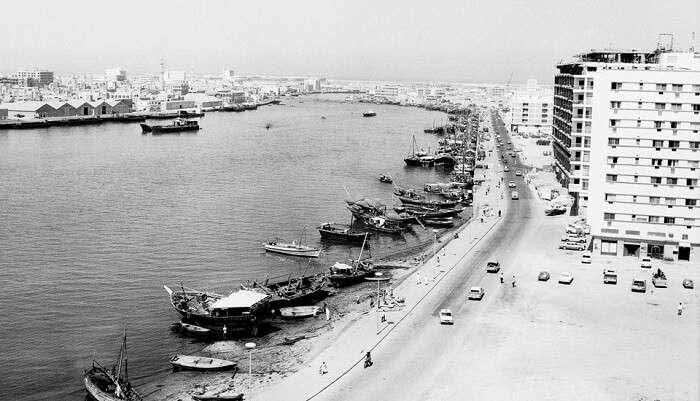
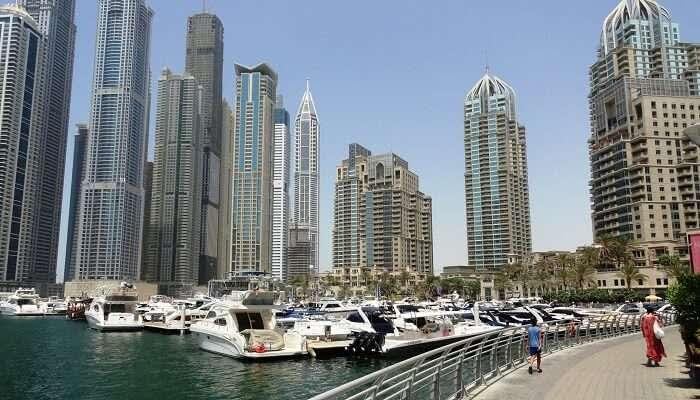
Dubai Creek In 1950 Vs Now
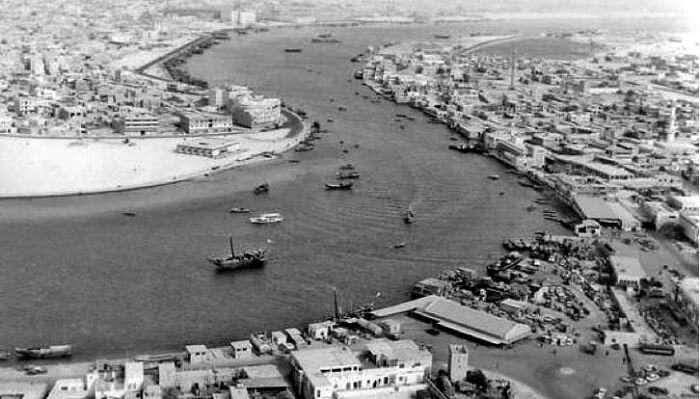
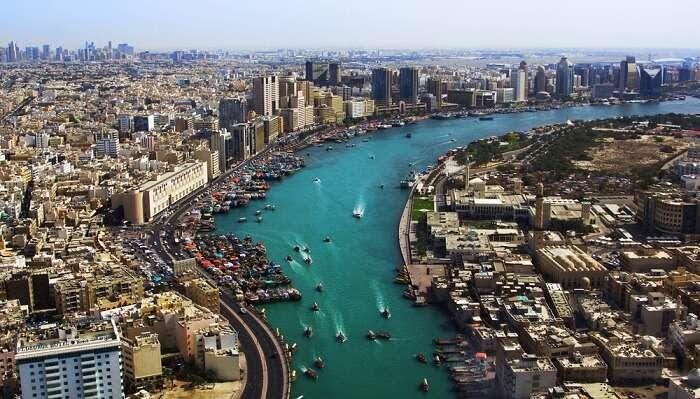
Dubai Airport In 1960 Vs Now
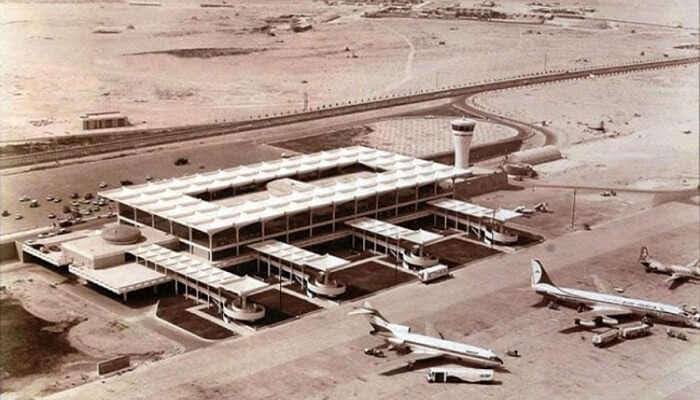
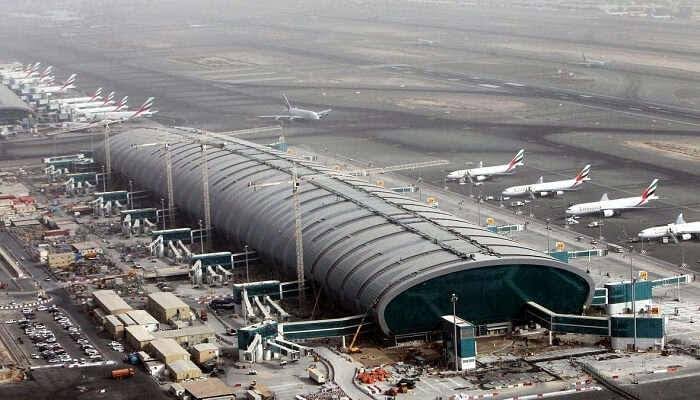
Downtown Dubai In 2000 Vs Now
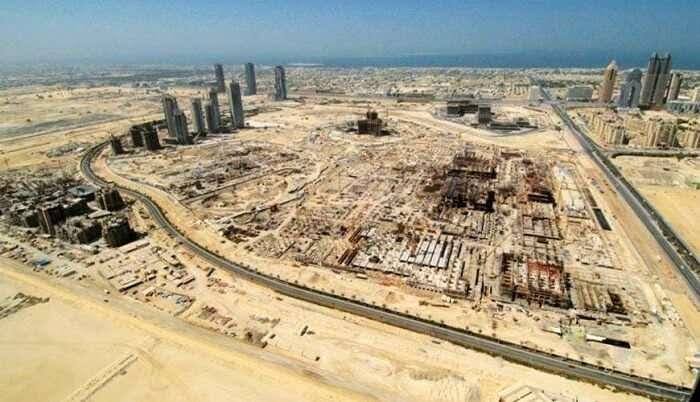
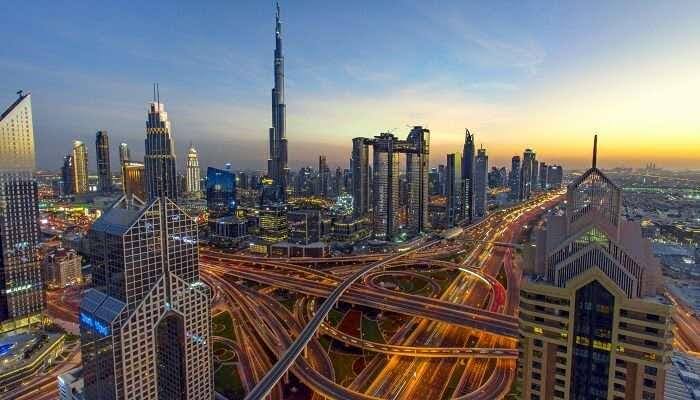
Deira Clocktower In 1969 Vs Now
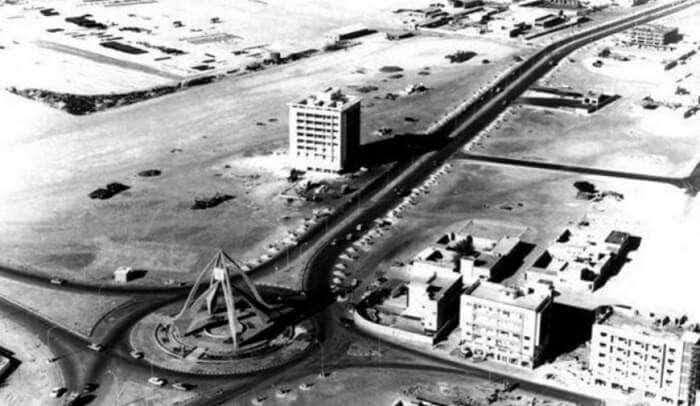
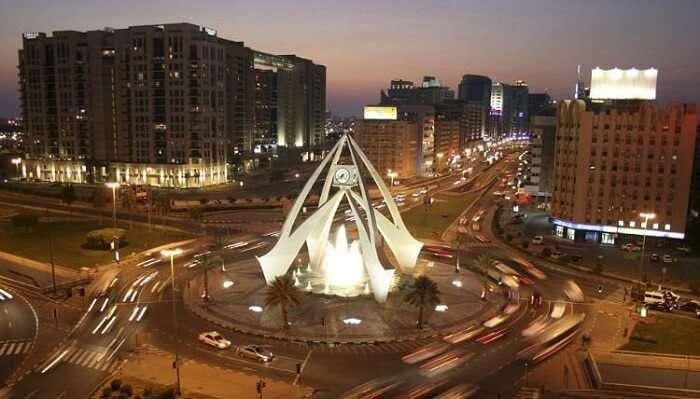
Dubai World Trade Center In 1980 Vs Now
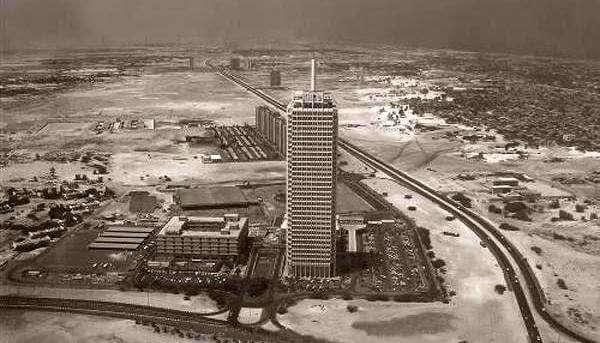
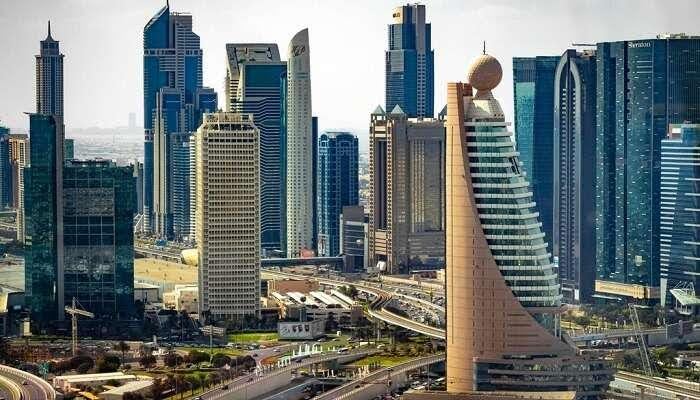
Sheraton Dubai Creek Hotel & Towers In 1978 Vs Now
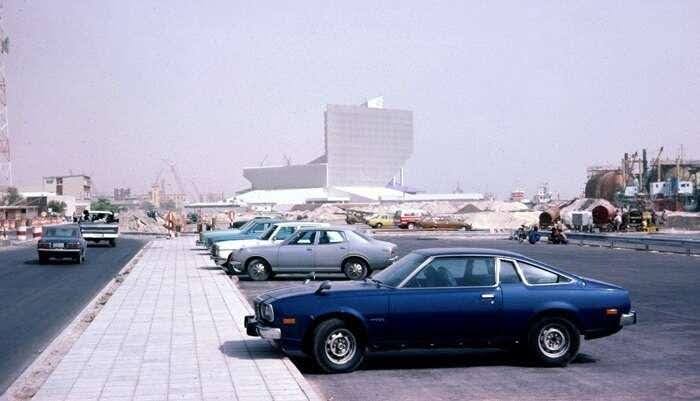
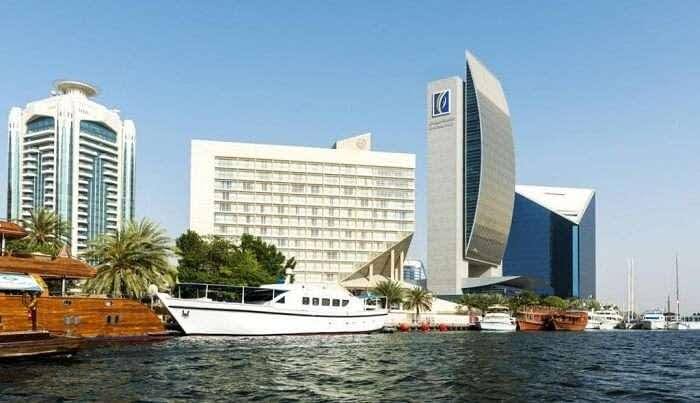
Dubai Jumeirah Mosque In 1974 Vs Now
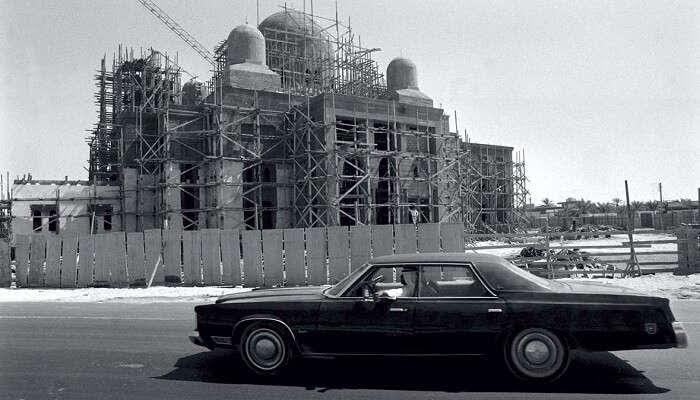
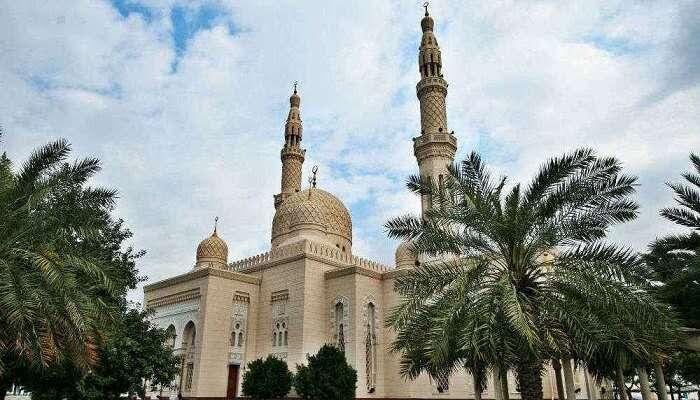
Dubai Dhow Cruise In 1950 Vs Now
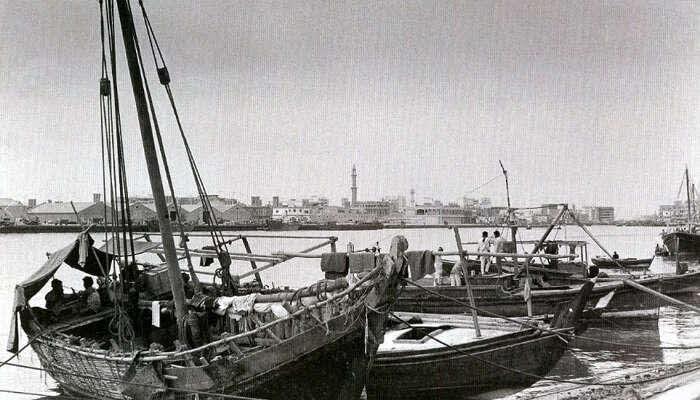
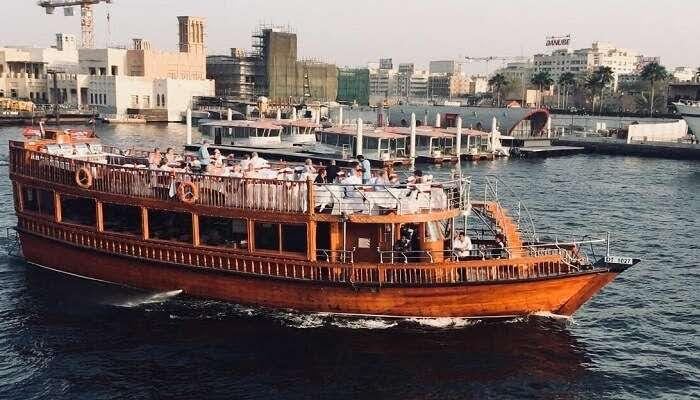
Explore Further

